
5 Best Travel Videography Courses: Free & Paid
by StableCameraAdmin | Reviews , Videography

Travel videography is a popular and exciting form of visual storytelling that captures the essence and beauty of different places around the world.
Whether you are an aspiring travel videographer or an experienced professional, it’s always important to keep learning and improving your skills.
With the advent of online courses, it is now easier than ever to get access to high-quality instruction and guidance.
In this article, we have compiled a list of the 5 best travel videography courses, both free and paid, to help you find the right course that suits your needs and budget.
1. Udemy: Travel Videography: Start Making Amazing Videos
This online course, “Travel Videography: Start Making Amazing Videos” by instructor Mario Guimarey, provides everything students need to start creating incredible travel videos and vlogs.
With over 20 years of experience travelling the world and filming his adventures, Mario has gained valuable insights and learned from his mistakes. In this course, he shares his workflow, tips on gear and trip preparation, as well as advice on composition, kinds of shots, and editing.
This one-hour course includes one downloadable resource, full lifetime access, and a certificate of completion upon finishing. It is designed for aspiring travel videographers, travel vloggers, and bloggers who want to improve their skills and create stunning videos.
At a cost of $34.99 , students will have access to Mario’s expertise and insights that he has gained over the years, and will learn how to avoid common mistakes in order to start making travel videos with confidence.
Highlights:
- Learn travel videography, travel planning, and videography skills from an experienced instructor with a 4.3 instructor rating
- Access to one hour of on-demand video, one downloadable resource, full lifetime access, and a certificate of completion
- Discover how to prepare for trips, shoot and edit videos, and improve composition and kinds of shots
- Suitable for travel videographers, travel vloggers, and bloggers of all skill levels
2. Skillshare: How to Make Exciting Travel Videos: Travel Filmmaking for Beginners
If you’re someone who wants to learn how to create engaging and exciting travel videos, then “How to Make Exciting Travel Videos: Travel Filmmaking for Beginners” course is perfect for you. This course is designed to provide students with foundational tools to become confident in planning, filming, and editing their next travel video.
The course is taught by Randy Alan, a video creator with over 12 years of experience in video production. Randy is both college-educated and self-taught, with a love for learning, creating, and sharing his knowledge.
This class is perfect for beginners and teaches the foundation in three phases. First, students will learn how to lay the groundwork before the trip, including what type of video to make and what kind of camera(s) to bring.
Second, students will learn how to build the story, including what to tell the audience and what camera techniques to use.
Finally, students will learn how to convey the story through editing, including how to sort through all the footage, what’s the best way to edit, and some powerful editing techniques that will boost the quality of the video.
The course is not focused on technical know-how, and all that is needed is access to a computer with basic editing software and a camera that you know how to use. After completing the course, students will have the blueprint they can take with them on their next trip and the practical skills to practice and implement immediately.
The course costs $32 a month to use on Skillshare.
- Designed for beginners
- Taught by an experienced video creator
- Covers the foundation of travel filmmaking in three phases
- Students will learn how to lay the groundwork, build the story, and convey it through editing
- No technical know-how is required; all you need is a computer with basic editing software and a camera that you know how to use
- Practical skills to practice and implement immediately
3. Skillshare: Travel Videography: What Gear You’ll Need!
In this Skillshare course taught by travel video experts Kristen Sarah and Nadine Sykora, students will learn about the gear needed to master travel video and build the ultimate travel vlogging kit.
The course covers camera bodies ranging from smartphones to GoPros to mirrorless cameras, the different types of lenses needed for various effects and overall storytelling, the importance of having good audio for clear communication with your audience, and how a drone can take your videos to the next level when flown legally.
Additionally, students will learn about the various camera accessories that can transform their entire video-making process, when to use tripods and stabilizers, and how to elevate their storytelling with the right rig.
While having the best gear is important, the instructors emphasize that skills and creativity are far more crucial to the quality of one’s work. Kristen Sarah and Nadine Sykora are well-known YouTubers, content creators, travel videographers, and savvy businesswomen with millions of followers across their social media accounts.
They have been full-time content creators for almost a decade and have extensive experience partnering with top international brands and tourism boards.
- Taught by travel video experts Kristen Sarah and Nadine Sykora
- Covers the gear needed to master travel video and build the ultimate travel vlogging kit
- Emphasizes the importance of skills and creativity over having the best gear
- Encourages students to be more descriptive about how gear would improve their work
- Includes a hands-on class project to assess current gear and dream gear
4. Jason Vong: Free Travel Filmmaking Course
This free course on travel filmmaking is taught by Jason Vong, a visual storyteller, and YouTube content creator based out of Los Angeles, CA.
Jason is an experienced wedding filmmaker, travel enthusiast, and YouTube content creator.
With an audience of over 300,000 followers, Jason and his managing partner, Vivienne, combine their years of filmmaking skills and love for photography to produce content featuring incredible visuals taken from their inspirations in travelling.
In this four-part course, Jason teaches students everything they need to know to create an epic travel film, from the recommended cameras, lenses, and accessories to use for creating travel films to unlocking the powerful features of Sony cameras and mastering their fast and precise autofocusing system.
The course also covers the best cinematic settings for your cameras and goes over tips and tricks on how to master the gimbal to produce cinematic videos.
With an aim to inspire future photographers and filmmakers by educating professionals and enthusiasts alike on how to unlock the full hybrid capabilities of their cameras, this course is perfect for anyone looking to take their travel filmmaking skills to the next level.
The best part is that this course is completely free , making it accessible to anyone interested in improving their travel filmmaking skills.
- Taught by Jason Vong, a visual storyteller and experienced wedding filmmaker
- Covers everything you need to know to create an epic travel film, including recommended cameras, lenses, and accessories, unlocking the powerful features of Sony cameras, mastering their fast and precise autofocusing system, the best cinematic settings for your cameras, and tips and tricks on how to master the gimbal to produce cinematic videos
- Perfect for anyone looking to take their travel filmmaking skills to the next level
- Completely free, making it accessible to anyone interested in improving their travel filmmaking skills
5. Karl Watson: How To Create Epic Travel Videos From Scratch
Karl Watson, a freelance video editor based in London and a creator of award-winning feature-length travel documentaries on his YouTube channel, offers an in-depth Masterclass on creating epic travel videos from scratch.
This course is ideal for those looking to launch an engaging travel YouTube channel or for anyone who feels stuck and in need of inspiration and direction in their video creation.
With over 12 years of experience in the media industry and having turned his hobby and professional work into one, Karl offers practical and engaging guidance on the fundamentals of creating epic travel videos, including honest and fun depictions of life on the road, transforming average videos to epic, and tips on video editing.
The course comprises nine chapters, 22 video lessons and a total of five and a half hours of engaging video lessons. The course is self-paced, allowing students to dip in and out depending on their schedule.
The course is priced at £415 GBP .
- Ideal for those looking to launch an engaging travel YouTube channel or for anyone in need of inspiration and direction in their video creation
- Taught by Karl Watson, a freelance video editor and creator of award-winning feature-length travel documentaries on his YouTube channel
- Practical and engaging guidance on the fundamentals of creating epic travel videos, including honest and fun depictions of life on the road, transforming average videos to epic, and tips on video editing
- Comprises nine chapters, 22 video lessons and a total of five and a half hours of engaging video lessons
- Self-paced course, allowing students to dip in and out depending on their schedule
Final Thoughts
Travel videography is a rewarding and creative field that offers a lot of opportunities for growth and learning.
With the right training and instruction, you can improve your skills and create stunning and impactful videos that capture the essence and beauty of different places around the world.
The five best travel videography courses we have discussed in this article offer a range of options for both free and paid courses that cater to different skill levels and budgets.
Whether you are just starting out or looking to take your skills to the next level, these courses are a great way to get started on your journey toward becoming a successful travel videographer.
New To Gimbals?
With so much to learn, mastering your new gimbal can be hard. Get started with our in-depth beginner guide to gimbal filmmaking.
Recent Posts

7 Best Play Memories Apps For Sony Cameras
Camera Gear , Reviews

12 Best Beginner Real Estate Videography Tips
Videography

5 Essential Shots For Wedding Videography

7 Tips For Renting Photography & Videography Equipment
Camera Gear

5 Best GoPro Gun & Bow Mounts For Hunting
Action Cameras
With so much to learn, mastering your new gimbal can be hard. Get started with our in-depth beginner guide to gimbal filmmaking.

7 Steps on How to Become a Travel Videographer + Tips
The following article on travel videography is authored by Garrett Galvan.
16.7 seconds.
That’s how long it took the mouse to find the elevated area in a murky pool of water. I made the note on my clipboard, placed another mouse inside the pool and set the timer.
That used to be my job. Recording mice’s behavior in a research lab.
To say my job was boring would be the understatement of the year. I thought I was making a difference, I thought my years of studying neuroscience would bring me a more fulfilling job, I wanted to help people, but instead, I put mice in a pool.
After a trip abroad, it became clear to me that neuroscience was something I loved and I was interested in, and still am, but working in the field was not prolific.
After getting home from that trip and piecing my random GoPro clips together, I noticed I became obsessed with the process of creating videos.
Here I am three years later, a travel videographer.
I may not be rolling in the dough doing epic expedition videos around the world full time (yet) but I’ve learned some shit over the years and I’m well on my way to making this my full-time career.
I hope this post helps you decide if travel videography is your thing, how to get there, and actionable advice and tips on what to do.
Current Videography Jobs
Table of Contents
1. Passion And Borderline Obsession
2. inspiration vs. mimicry, 3. turn your camera on, 4. edit your little heart out, 5. actually make sh*t, 6. equipment matters, 7. freelance videography and more, 1. freelance videography and editing, 2. selling stock video, 3. your own brand, top tips for becoming a travel videographer, how to start freelancing for beginners—work online & travel, 56 work from home websites—earn money outside the office, 11 travel jobs that helped me stay on the road, 71+ ways to travel & make money—a badass list of paid work abroad, how to be a freelance content writer and turn your words into money, 20 online jobs with no experience needed (so you can travel more), how to become a travel videographer.
Want to know the big difference between those who succeed and those who fail? It all comes down to the classic quote: “winners never quit and quitters never win.” Same goes for any type of photography or videography, especially travel videography.
Must. Love. Filming.
You really have to be dedicated to not only filming everything you do but also to traveling! You are not going to get a loyal following and earn money if you only travel once a year, to Hawaii , and that’s it.
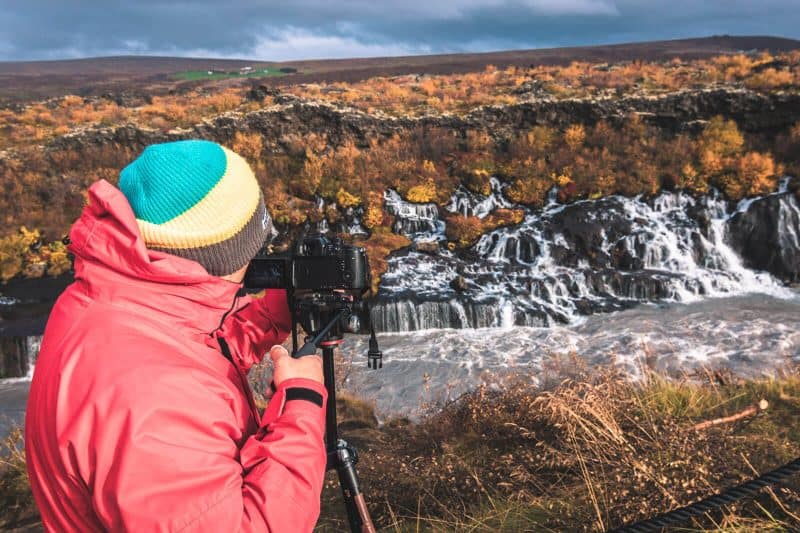
This lifestyle is something you have to live and breathe by. If it is something that drives you, traveling and filming your ventures, then you will be doing it for love anyway, the money and the fame (fame?) will be a natural (happy) byproduct.
Some people will try to convince you that genius springs from a noble brow, that you must be highly skilled at birth and that no amount of training will make you an expert if you’re not already talented.
Nothing could be further from the truth. Your desire will guide you to your talent, and practice and mentorship will make you an expert, a genius, a pro.
Make YouTube your best friend and find your mentor. Watch other travel videographers and see what they do.
Pick and choose which pros you like the best and start practicing. Your own spin on what the experts do will spring naturally from your practice. Just find videographers you admire the most and turn your camera on.
I literally picked up my camera and started filming one day. And then I didn’t stop. Zero prior experience and no love for it since I was 12. I just felt a desire to film a bit of my month-long vacation in Indonesia , only to come home and leave immediately with a one-way ticket—I never stopped filming.
RELATED: How to Start Making Money with Travel Photography
The sooner you begin, the sooner you will begin to develop your own style, the thing that will make you stand out from the rest of us. So turn on your camera and shoot.
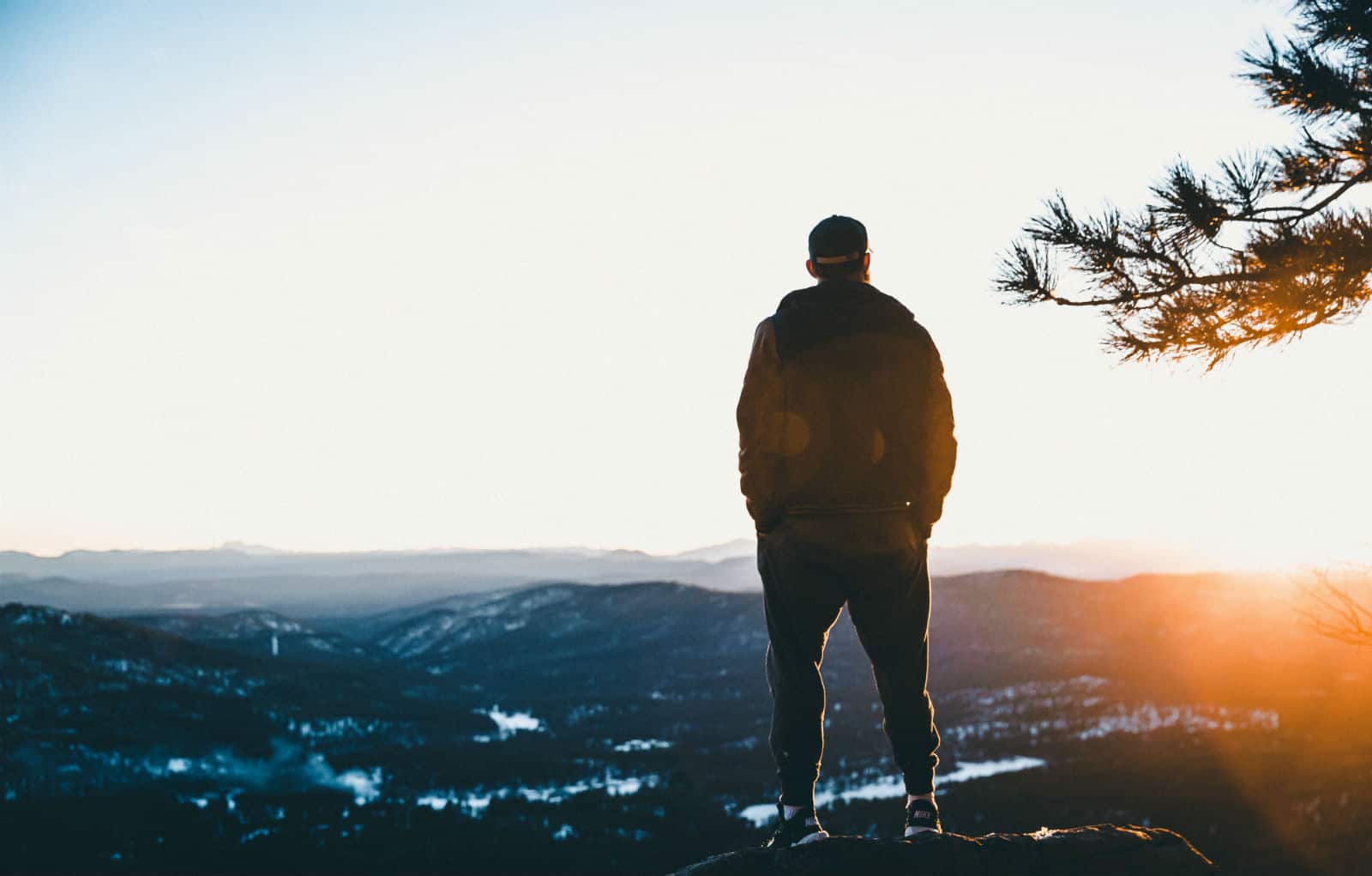
Trust me: you will suck at first. Everyone does. This is part of the fun, part of the journey.
Travel videography is not for the faint of heart.
Make videos, and post them. Yes! Post them. You have to be willing to put yourself out there to an audience who will boo you, criticize you, troll you.
Get yourself a YouTube channel and upload those videos. Watching what you’ve done will give you the inspiration to fix and move forward. It all begins with the “On” button. Push it.
Find yourself a program to edit your videos. You do not want to provide one streaming loop of you brushing your teeth and getting out the door, taking public transportation and arriving at some cool scene.
You want your cuts to be clean and your story to be clear as it unfolds on camera.
And you don’t want anyone falling asleep.
As a baseline for information, DaVinci is a free program, but Adobe Premiere, Final Cut, and InVideo are the standards most travel videographers use. Remember that in most cases, you get what you pay for, and if you pay nothing, well… you get the point.
With that said, for a free product, DaVinci is a great beginner program to segway into a paid one in the future. However, if you really get into editing videos, you’ll have to fill a larger gap if you started with iMovie or the like and try to move to Adobe.
If it helps you, here’s a tutorial on my video editing flow on Adobe Premier
RELATED: 56 Work From Home Websites – Earn Money Outside the Office!
This point cannot be stressed enough. Make lots of videos. Take small road trips if you are not a nomad like me. Hell, take a trip across town and film it.
Film as much as you can and then take that footage to the drawing board where you can edit and create an actual visual story for your audience.
Remember, this takes practice. You cannot get frustrated and give up when it becomes difficult or tedious.
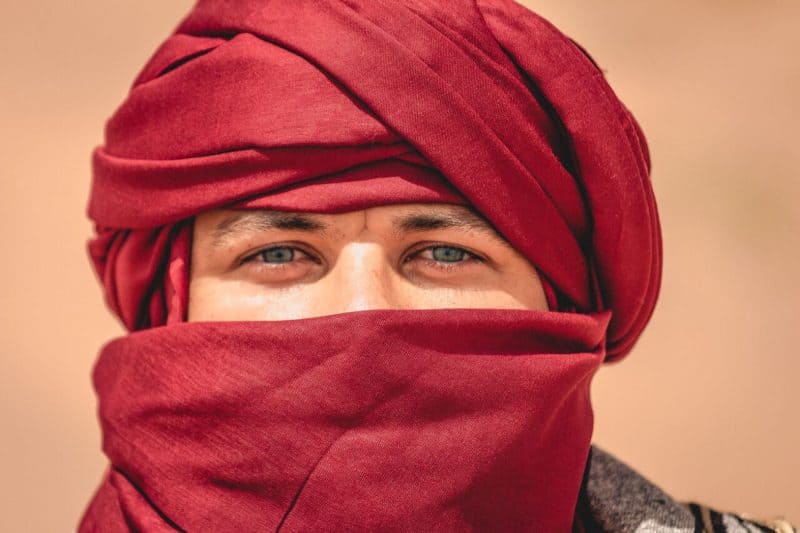
There are always behind-the-scenes to art, and this art is no different. You are the behind-the-scenes artist in these moments. So practice and hone your art. Find things that inspire you and film them, edit them, show them, and repeat.
Michael Jordan carried a basketball around with him all day, every day, even as a teenager. He played every single day after school and on weekends. Get the point? I think you do.
You absolutely cannot become a successful travel videographer with just an iPhone. Sorry. If that broke your heart, at least the worst is over.
You will have to invest in quality camera equipment . Again, you get what you pay for, so you will have to fork over some bucks to get the tools you need to become the Michael Jordan of travel videography.
Equipment is one of the things that really makes a good travel videographer stand out (and actually knowing how to use it).
You will get better images, better sound quality, and clearer colors and hues with good equipment. It is not worth honing your skill and perfecting your videographer’s eye if you don’t plan to have the camera to back you up.
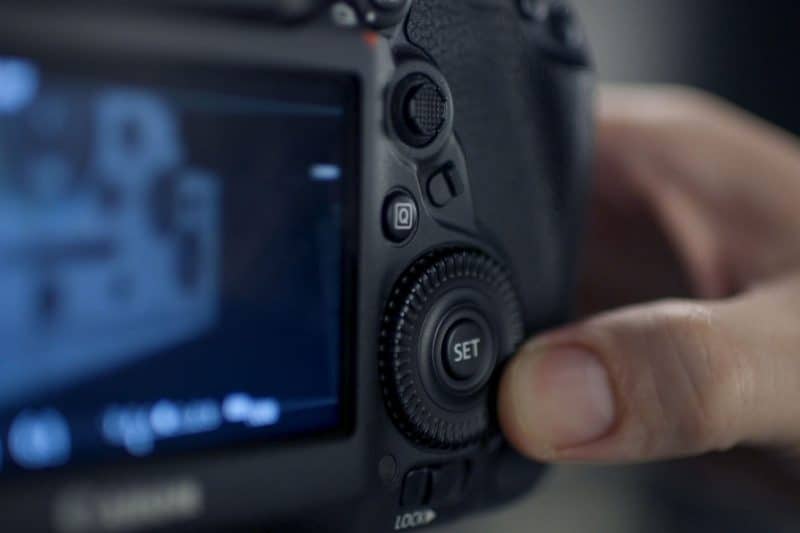
Of course, dropping $10,000 on gear after the desire to be a travel videographer for a whole twelve seconds isn’t the smartest move either. And there’s no need to get top-rated equipment to start yourself off either.
Get some of the basics. Maybe a point-and-shoot for your first camera, so you can try out travel vlogging, is a good start and will only set you back a few hundred bucks.
Maybe even borrow your friend’s DSLR to play with or there are even options to rent gear for a bit if you’re deciding between what camera to get.
Just remember, you don’t want something so expensive and advanced that it just sits there because you’re too intimidated by it.
RELATED: 9 of the Best Travel Tripods for Any Snap Happy Traveler (Pro or Not!)
So you’ve honed your skill, you’ve purchased the equipment you love, and now you want to know where the money is? The money is literally where you find it.
You will need to reach out to current videographers and ask if they want a second-hand cameraman. Look for any low pay or even unpaid opportunities to start testing your newly acquired skills in a professional setting so eventually, you can start charging the big bucks.
Be prepared to do internships, to do grunt work, and to make very little money in the beginning.
Not only will you begin building your own brand in this way, as a freelance travel videographer, but also building a network in the field.
You will find more lucrative jobs, you will start to raise your own fees, and the cycle will continue for as long as you want it too, it will get better and will start making you more money.
How to Make Money as a Travel Videographer
There are numerous ways to do so and you can choose to do all or some of the choices depending on your skills, availability, and how far along the travel videography path you’re down.
This is rather broad. You can either freelance as a videographer helper, as in you help another travel videographer with their video assignment or you can even work for brands and companies as their travel videographer.
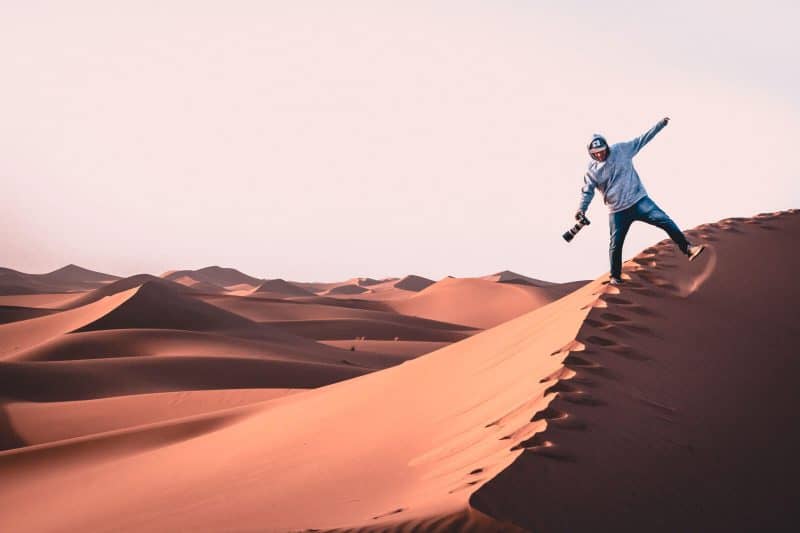
There’s also freelance video editing if you choose to go down that route.
Perhaps you’ve mastered Premier. Well, guess what? There’s a need for editors out there because not everyone has the time or motivation to learn video editing software. They send you their video clips and you work your magic.
RELATED: 71+ Ways to Travel & Make Money – A Badass List of Paid Work Abroad
There’s a high demand for 4K 60FPS video footage from all around the world.
Of course, it needs to be good and perhaps not a place that’s filmed by the thousands every day, but even then! If you capture a unique angle or a super sick shot, people are selling their video footage for a pretty penny these days.
This is life goals, right? This is making money as a travel videographer through your own brand.
Whether it’s companies paying you to do videos for them and using your audience, tourism boards inviting you and paying to create a video of their country, or you making money simply off ads on people watching your YouTube channel.
Making money using your own brand is super rewarding but also, not very easy.
RELATED: The Three Things You Absolutely Must Have For Your Passion Project to Succeed
1. There’s no do-over when it comes to getting the shot. Chances are, you’re traveling (duh) and you won’t be back to that spot or the sun has gone down and it’s too dark, or the scene has changed… Get it right on the first round. This, of course, doesn’t mean you get literally one take. What I mean is take the time to set up properly the first time, tick all the boxes, and then shoot.
2. Get different and dynamic angles of the same shot. Get a close-up, a far shot, a wide shot, a blurred shot… all of the same thing. Whatever your subject is that you’re focusing on, you need dynamic shots of it.
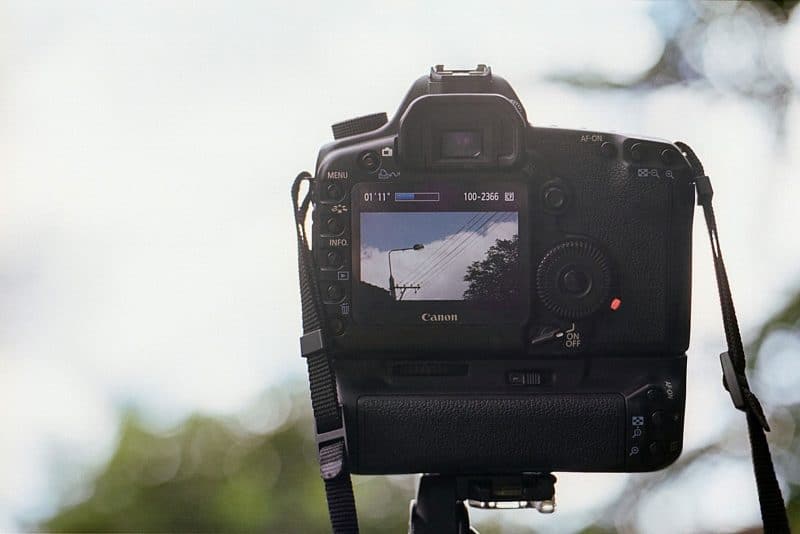
3. Tell a story with each video. Think of the story beforehand and think of the shots you’ll need to convey to tell the story. Make people feel like they are there.
4. Focus. Don’t have 12 things to do in one day. Have a main focus for the day and surround your story around it. Don’t get distracted by all the beautiful scenery you will see in your travels. Focus on your story and shoot the shots that are required to build it. You’ll thank me in the editing room. Which brings me to my next point…
5. Shoot with purpose. If you shoot everything, you’re going to have a mess on your hands when you get back to the computer. You’ll also be buried under 40,574 hard drives. Shoot with thought.
6. There’s no set path to this job. There are certain things you should do, yes, but each person’s path to the goal will be different.
7. Know that there’s no fast-paced lane to success. Work hard and the rewards (and opportunities) will come. It will seem like an eternity while you slog along but if this is truly what you want, you’ll happily crawl through the trenches and come out on top in the end.
8. Start social media immediately. This way, people can see your work and you can have a mini fan base rooting you on. This is also your portfolio!
Being a travel videographer isn’t for the lazy or the impatient. Building your self-worth takes time, your skills will take time to develop, and your equipment bag will also take time to get filled with the right gear.
If this is something you truly want, GO FOR IT!
Unsure? Play around with video on your iPhone and with free video editing apps and see if you get into or not.
There’s nowhere else I’d rather be than behind my lens, that’s where you’ll find me.
💁♀️ Digital Nomad Tips 👩💻
1. Teach yourself new SKILLS!
Start learning—for FREE
2. Find LEGIT remote jobs!
Start searching for your remote job
3. Make sure you’re COVERED abroad!
Best travel insurance for digital nomads.
More Freelance Jobs
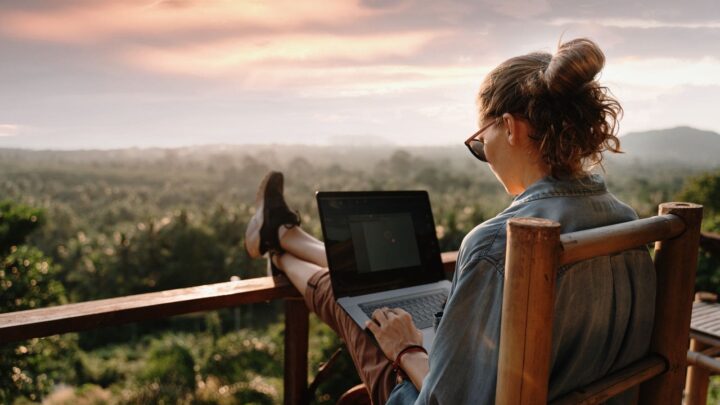
Is travel videography for you? Did you have any more questions on what it takes to be a travel videographer? Let us know in the comments!
>>> Bio:
Garrett left his small town in Oregon with a dream and a camera. A few years later he has been to over 30 countries all while producing high-quality cinematic adventure videos and photos of the destinations he visits. Join him as he pursues a life of videography, photography and expeditions all over the world. You can find him on YouTube at Garrett Galvan , his blog MotoMoves , and Instagram .
Pin this post for later!
Nina Ragusa is an adventurer, messy bun master, breakfast fan, and full-time travel blogger. She's been abroad since 2011 and blogging on Where in the World is Nina? for nearly as long. Nina helps people like you move around the world while making money. She loves talking about how to work abroad and online to travel longer! Read more about Nina
Leave a Reply Cancel reply
Your email address will not be published. Required fields are marked *
One Comment
Hello, this was very informative. Where can i get sites where i can get a job as a travel videographer and where i can showcase my work.

- Instagram / Photography / Travel / Work
How to Become a Travel Videographer (+ Tips to Make Money)
Published June 17, 2022 · Updated June 9, 2023
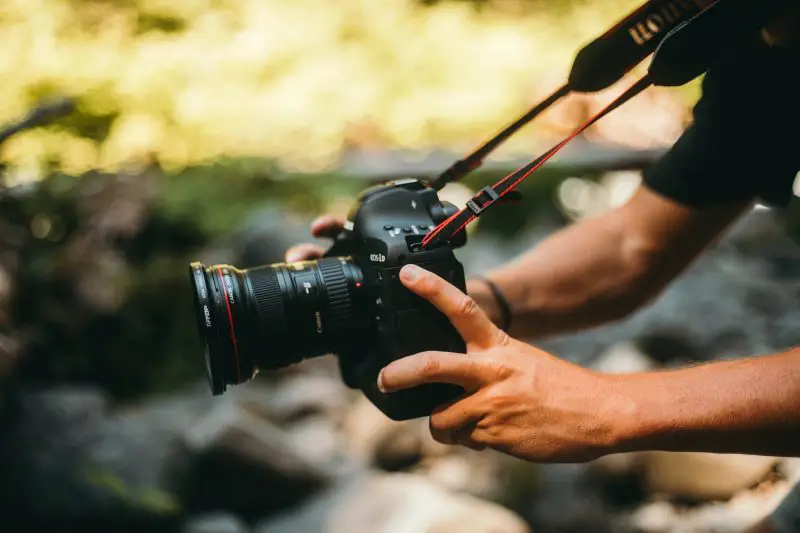
Ah, the life of a digital nomad ! Traveling the world, exploring different cultures, seeing spectacular sights, making new friends, tasting exotic foods , AND getting paid for it, too! For many of us, it’s the ultimate dream – but how do you actually jump from ‘traveler’ to ‘paid videographer’ in the increasingly saturated online space? Let’s look at some tips and tricks on how to become a travel videographer to help you make the best of your chances.
>> Read next:
- List: The best travel songs to fuel your creativity
- As you explore, here some travel questions to consider
- And then describe the journey with these creative words about travel
- 100 epic travel sayings to inspire your inner explorer
- Essential flying tips (+ what NOT to do on a plane)
- Capture some amazing content at these paradise islands to visit in the world
- 10 important advantages of traveling
- Misadventures: That day my camera fell down a mountain
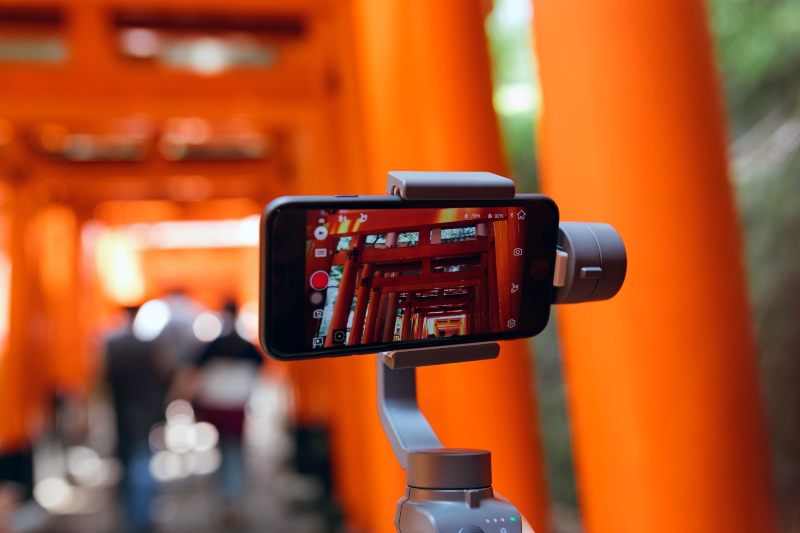
Staying Grounded
While it may not be the first thing you want to hear from us, let’s start with the reality check. You’re not going to hit the ground running and become a globetrotting multi-millionaire overnight. If you’re hoping to build up a career as a traveling videographer, you’re going to need the skills. You’re also going to have to have the ‘hustle’ you need to create fantastic content, sell yourself through online marketing, and build an engaged following. While this can be the ultimate dream job for the right soul, it’s not an easy way to make bank! But as long as you keep your goals realistic and your eyes on the prize, it’s a dream that can come true.
The Right Mindset: Become a Businessperson
The influencer lifestyle looks amazing… but you’re still a businessperson first and foremost. You need to tap into this mindset. You’ll be living in different locations, dealing with culture shock, navigating new worlds , making new friends , and learning about local life. It’s very different from taking a 1-week vacation with family . So you need to keep your eyes on your goals – building your business. Plus, of course, creating amazing video content.
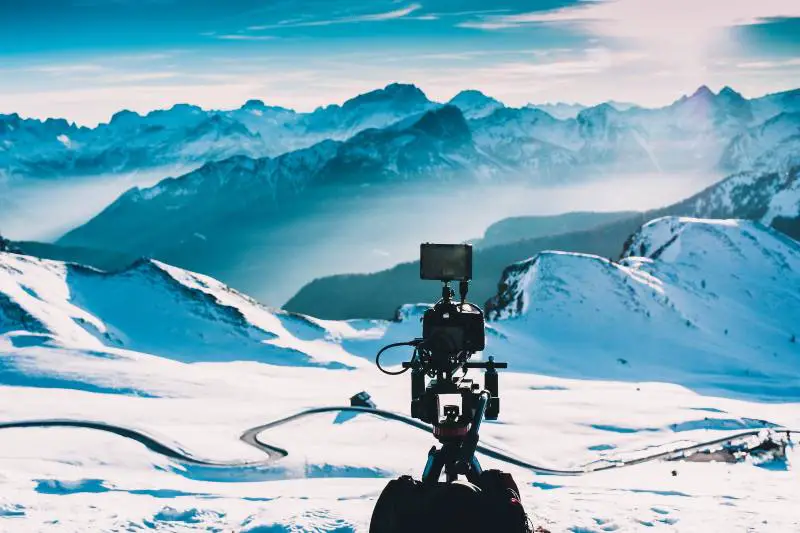
Start with Your Skills
To make money as a travel videographer, you need the skills first and foremost. Luckily, many fantastic audio and video courses are out there to help you learn. You’ll need to practice a lot, too, so get used to carrying that camera with you.
Invest in Your Gear
Even the best videographer in the world can’t work magic with poor-quality source material. While some travel videographers do use cellphones to record raw footage, you’ve got a much better chance of landing the followers and gigs you want if you stand out from the crowd. At the very least, you need at least one, possibly two good cameras, quality lenses for different effects and situations, and a great audio recorder that plays nicely with your other gear. Many of the best think further out the box, investing in drone systems for aerials and mirrorless/SLR cameras for shooting interviews and compelling stock footage you can also sell. While you may have to keep it simple to start, remember that great gear produces great results.
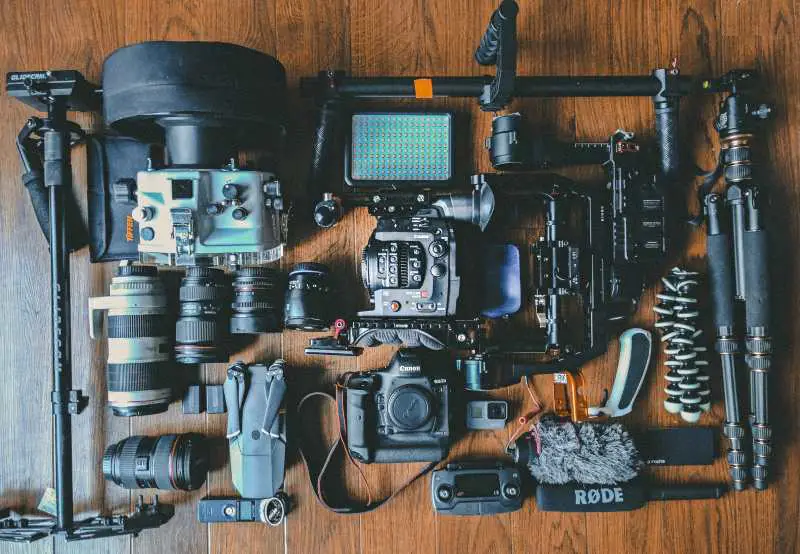
Work on Key Business Skills
Many conventional film schools simply teach you with a mind geared towards entering the entertainment industry. If you’re looking to thrive as a travel videographer, however, that’s not the right route for you. Remember that you will need to wear many hats to make your digital nomad dreams take off. Not only your videography, but learning more about marketing yourself online and through social media, how to successfully freelance in video content, and general marketing and business skills will be critical on this journey.
Finding Paying Gigs
Realistically, it might take a while to start seeing real money from your efforts. Once you have the skills and gear you need, it’s time to find your clients!
When you hear of ‘travel videographers’, your mind might jump immediately to travel influencers . If you can successfully build an online social following and monetize it, that’s fantastic! However, if you’re hoping to leverage your new passion for immediate money, social success isn’t the way to go.
- Many aspiring travel videographers start with a company or team. It can be more restrictive than the true digital nomad lifestyle you crave, but it’s a great way to build a reputation, network, and know you have the security of an incoming paycheck to help you hit the ground running.
- Freelance and gig-work can also be a great way to get paid from the start of your career. Be proactive in marketing yourself and chasing gigs that align with your goals.
- Transition your day job. Many aspiring travel videographers start out by keeping a day job and working on their passion on the side. If you look at moving to a country with a low cost-of-living, you can reduce costs and still work on your craft. This is especially great if you have a ‘backup job’ that will let you work remotely while you hone your skills.

Building Social Support
Regardless of whether you’re using gig work to pad your bank account while you build your name, it’s always smart to look to social media channels for added funding and support.
- Start with a website. Not only does this help people find you, but you can showcase portfolios and promote your services. You can shoot for free to build a video reel if you don’t already have the reputation and portfolio to have one in the can.
- Find good social media. You don’t need to be on every ‘cool’ platform that rears it’s head, but using image-focused and common social media sites help you build awareness of your work, engage with fans, and put yourself out there. YouTube and Instagram , alongside Facebook, should be seen as the bare minimum. Post every week, and make sure you’re adding value to subscriber’s lives.
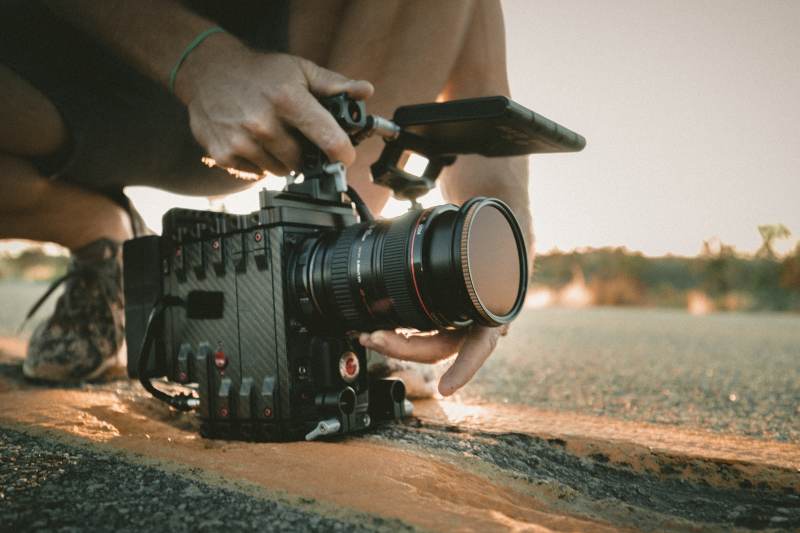
Sell Stock Video
Video content is currently booming, with stats suggesting up to 86% of businesses use video as their primary marketing tool. Not all of them are shooting special videos on location. Many use stock footage to enhance or create their content. By making and selling stock footage of your own, you can generate a decent income to help you grow. What is particularly fantastic about this is that it can help you build passive income streams, ensuring you can eventually transition full-time to your passion and leave the 9-5 in the dust.
Offer a Range of Services
By thinking broadly, around all the ways you can leverage your footage and skills to earn an income, you not only diversify your revenue sources, but get closer and closer to your goals of living life your way. Perhaps you can offer services like destination wedding shoots, or create helpful courses to sell your skills. Many social media accounts leverage direct donations through services like Patreon from fans. Or perhaps you create a great filter, or novel piece of software, for use in your own shoots you can market to other videographers. Make sure you’re always wearing your ‘business hat’ to find ways to make your dreams a reality.
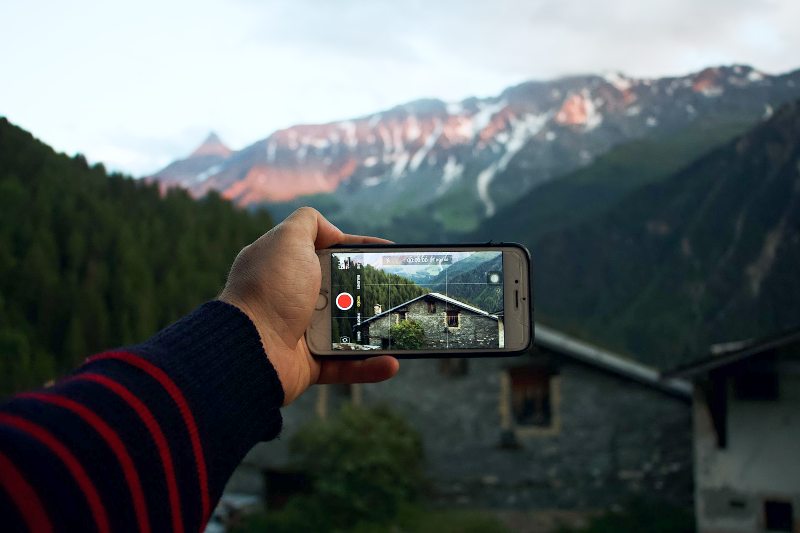
While making a living as a travel videographer can seem daunting at first, it’s also an incredibly fulfilling way to work and travel the world, especially once you can make a great living from it. With enough passion, determination, persistence, hard work, and a little bit of luck – it’s bound to happen. Just don’t keep count on the number of countries you’ve visited .
Good luck! Rai
You may also like...

🥇13 Best Treks in Nepal To Help You Choose the Right One → Nepal Trekking Guide
September 7, 2023
by Raihaan · Published September 7, 2023
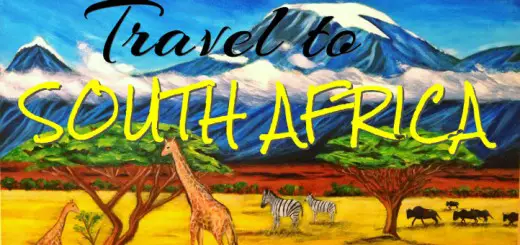
20 Reasons Why You Should Travel To South Africa. Right now.
March 13, 2023
by Raihaan · Published March 13, 2023 · Last modified April 28, 2023
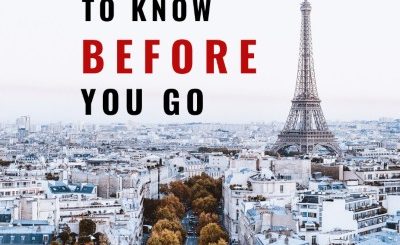
Hidden Gems: 10 Best Secret Views in Paris!
September 27, 2023
by Raihaan · Published September 27, 2023
Leave a Reply Cancel reply
Your email address will not be published. Required fields are marked *
- Next story The 10 Best Things To Do in Chattanooga TN
- Previous story How to Protect Your Privacy While Traveling
WHO IS ARAIOFLIGHT ✈
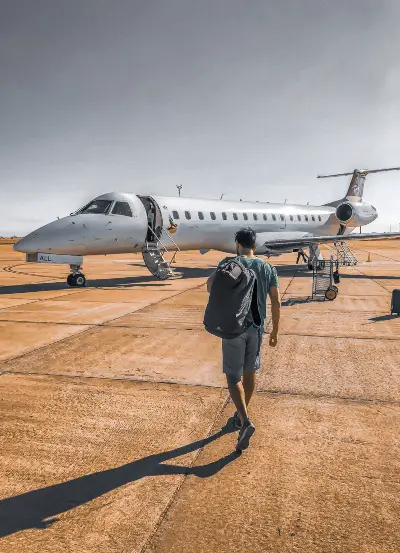
Welcome to A Rai of Light!
A home for extraordinary people around the world. If you've ever felt like there must be more to life, this site is for you.
Out of a love for travel, writing, photography, sharing stories and a desire to inspire others , I created this space to connect with other like-minded individuals.
Along the way, I share my journey and strategies on Travel , Art and Life . Enjoy!
DISCOVER MORE: POPULAR ✈
- Recent Posts
- Popular Posts
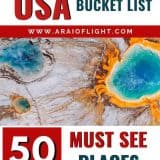
USA BUCKET LIST | World Travelers Reveal The Best 100 Places To Visit in USA

Where To Stay in Zambales: BEST Beach Resorts

10 Most Beautiful Spanish Islands To Visit [2024]

My Stay at the Hyatt Centric Juhu Mumbai: Hotel Review

ᐅ LAUGH OUT LOUD with these Funny Travel Quotes

10 of the Best Tropical Islands to Visit Around the World (that won’t break the bank)

15 Romantic Getaways in the Midwest USA

Ranked: 15 Most Beautiful Flags in the World in 2024

List: Which Countries Can You Visit on a Schengen Visa in 2024

WEIRD Food around the world | 35 World Travelers reveal the strangest food they’ve ever eaten

First Trip to Egypt? My Ultimate Guide of Insider Tips To Know BEFORE You Go

Epic List: The Best Short Treks in Nepal!

Flying Tips: 13 Things NOT To Do on an Airplane
FOLLOW THE ADVENTURE ✈
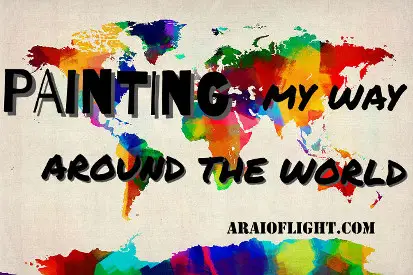

- Travel Photography and Videography
Mastering Cinematic Travel Videography: 15 Tips to Create Stunning Travel Videos
- 10 minute read
- August 8, 2023
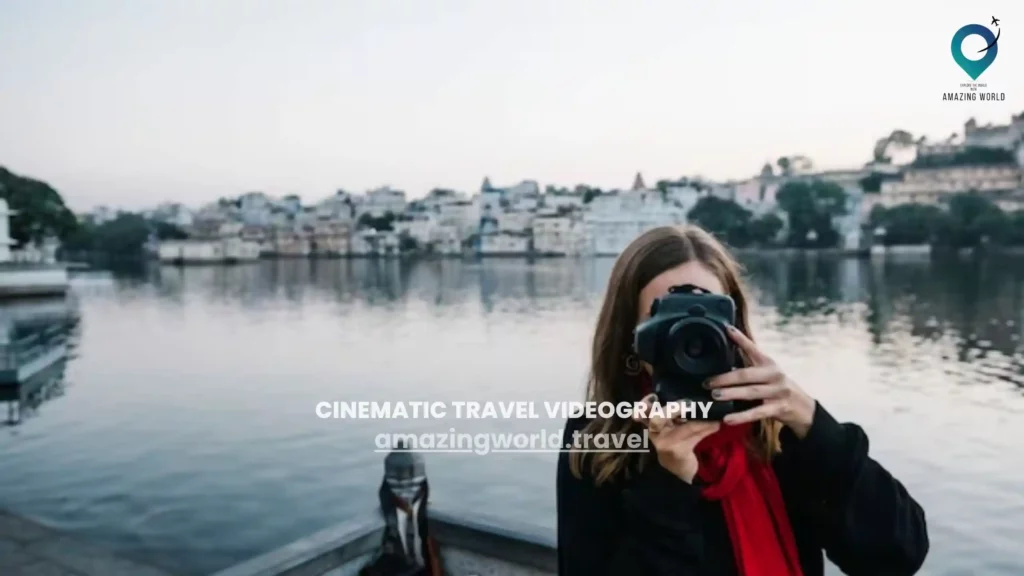
Welcome to the captivating realm of cinematic travel videography, where each frame transforms into a window to the world’s most breathtaking destinations. Whether you’re an aspiring filmmaker or an adventurous traveler with a camera in hand, this comprehensive guide is your passport to creating mesmerizing travel videos that capture the essence of your journeys.
In this digital era, travel videos have become more than mere documentation – they’re immersive experiences that transport viewers across continents, cultures, and emotions. From the warm embrace of the golden hour to the dynamic movement of camera shots, each element plays a pivotal role in painting an evocative tapestry of your adventures. Embark on this journey with us as we delve into the intricacies of planning narratives, harnessing natural light, and mastering camera techniques.
In the pages ahead, we’ll uncover the art of composition that transforms mundane scenes into cinematic masterpieces. We’ll explore the symphony of colors and sounds that breathe life into your videos, adding depth and emotion to every frame. Whether you’re capturing the vivacity of bustling markets or the serene tranquility of hidden landscapes, we’ll guide you through each step to ensure your travel videos resonate with audiences around the world.
- Choosing Amazing Places
The choice of locations forms the foundation of your cinematic travel videos. Look for places that are visually striking and narratively intriguing. These are the places that will engage your audience and make your videos stand out.
- Stunning Views: Seek destinations with awe-inspiring landscapes, architecture, and natural beauty.
- Narrative Richness: Opt for locations with historical, cultural, or personal significance. Places that tell stories on their own.
- Planning Your Story
Creating a cinematic travel video is more than just capturing beautiful visuals; it’s about telling a compelling story. Think of your video as a journey with a beginning, middle, and end. To craft a captivating narrative:
- Structured Approach: Plan your video’s storyline like a roadmap. Outline the sequence of events and shots you want to include. This provides a clear direction for your filming and editing process.
- Emotional Arc: Consider the emotional journey you want your viewers to experience. Will your video evoke excitement, nostalgia, or introspection? Map out how emotions will evolve throughout the video.
- Key Moments: Identify pivotal moments that resonate with your overall story. Whether it’s a breathtaking view, a local interaction, or a cultural experience, these moments will be the pillars of your video’s narrative.
3. Planning Your Story
Crafting a compelling narrative is at the heart of cinematic travel videography. Your travel video is more than a collection of scenes; it’s a story that should engage your audience from start to finish. Here’s how to plan your story effectively:
- Structured Approach: Treat your video like a story with a beginning, middle, and end. Create a storyboard that outlines the sequence of shots and scenes you want to include.
- Emotional Arc: Consider the emotions you want to evoke in your viewers. Think about how you can build up emotions throughout your video to create a captivating journey.
- Key Moments: Identify the highlights of your travel that are essential to your story. These moments should capture the essence of your experience and contribute to the overall narrative.
- Using Natural Light
Natural light is a cinematographer’s best friend, and it can make your travel videos truly cinematic. Here’s how to harness the power of natural light for stunning visuals:
- Golden Hour and Blue Hour: These are the periods just after sunrise and before sunset when the quality of light is magical. The golden hour bathes scenes in warm, soft light, while the blue hour adds a serene, ethereal ambiance.
- Setting the Mood: Use the specific qualities of light during these hours to match the mood of your scenes. Golden hour light can evoke warmth and intimacy, while blue hour light can create a dreamy and contemplative atmosphere.
- Camera Skills Made Simple
Creating cinematic travel videos doesn’t require you to be a professional filmmaker. Here’s how to master camera skills that add cinematic flair to your footage:
Basic Movements: Begin by practicing fundamental camera movements that can instantly enhance the quality of your shots:
- Panning: Slowly move your camera horizontally from one side to another. This is great for capturing sweeping landscapes or revealing scenes.
- Tilting: Rotate your camera vertically, moving it up or down. Tilting is useful for emphasizing tall structures or capturing dramatic skies.
- Tracking: Follow a subject’s movement by moving your camera smoothly alongside it. Tracking shots add dynamism and immersion to your videos.
Stabilizers: Achieving steady shots is essential for a professional look, especially while on the move:
- Gimbals: Invest in a handheld gimbal or stabilizer. These devices counteract any shaky movements, resulting in smooth and cinematic footage.
- Steady Hands: If you’re shooting without a stabilizer, practice holding your camera steadily and walking smoothly to avoid jerky motions.
- Making Pictures Look Great
Composition is a powerful tool for creating visually captivating shots. Mastering composition techniques can significantly enhance the cinematic quality of your travel videos:
Rule of Thirds: Utilize the rule of thirds to create balanced and visually engaging compositions:
- Imagine your frame divided into a 3×3 grid with two horizontal lines and two vertical lines.
- Place your subject or important elements along these lines or at their intersections.
- This technique adds visual interest and guides the viewer’s eyes to key elements in the frame.
Leading Lines: Incorporate leading lines to draw the viewer’s gaze and create depth:
- Look for natural or architectural lines within your scene, like roads, rivers, or fences.
- These lines guide the viewer’s eyes into the frame, adding a sense of movement and perspective.
Foreground and Background: Play with foreground and background elements to add depth:
- Place objects or elements in the foreground to frame your main subject and create layers within the shot.
- This technique adds dimension and makes your shots more visually engaging.
- Colors That Feel Right
Colors have a profound impact on the emotional tone of your videos. Understanding color psychology and applying color grading techniques can elevate your cinematic travel videos:
Color Psychology: Different colors evoke specific emotions and moods:
- Warm Colors (Red, Orange, Yellow): Convey energy, warmth, and excitement. Use them for vibrant scenes and moments of action.
- Cool Colors (Blue, Green, Purple): Evoke calmness, serenity, and reflection. They are well-suited for tranquil and contemplative scenes.
Color Grading: During the editing process, use color grading tools to achieve a cohesive and cinematic color palette:
- Adjust colors to match the mood of each scene. Enhance warm tones for joyful moments and cool tones for introspective scenes.
- Consistent color grading unifies the visual style of your video, making it feel like a cohesive cinematic experience.
8. Getting Extra Shots
Capturing the details adds depth and authenticity to your cinematic travel videos. Consider these techniques to create a richer visual experience:
Texture and Close-ups: Zoom in on textures, patterns, and small details that define the essence of a place:
- Capture close-up shots of textured walls, vibrant textiles, local crafts, and unique architectural features.
- These shots offer a tactile and immersive perspective, allowing viewers to appreciate the finer aspects of your surroundings.
Contextual Shots: Incorporate scenes that provide context to your location and convey a sense of local life:
- Film scenes of bustling markets, people going about their daily routines, or street vendors interacting with customers.
- Contextual shots establish the setting, culture, and atmosphere, making your video more immersive and engaging.
9. Sounds That Capture Moments
Sound plays a crucial role in creating a multisensory cinematic experience. Here’s how to use sound to enhance the immersion of your travel videos:
Ambient Sounds: Capture the sounds that define each location, bringing your audience closer to the environment:
- Record ambient sounds like the chirping of birds, the rustling of leaves, the chatter of a crowded square, or the waves crashing on the shore.
- These sounds transport viewers to the scene, making them feel as if they are right there with you.
Music Selection: Choose music that complements the mood of your video and enhances its emotional impact:
- Select tracks that resonate with the overall tone of your video, whether it’s uplifting, reflective, or adventurous.
- The right music creates a powerful synergy with the visuals, amplifying the emotions you want to convey.
10. Making Scenes Flow
Seamless transitions are essential for maintaining the rhythm and coherence of your cinematic travel video. Here’s how to ensure smooth transitions between scenes:
Transition Techniques: Experiment with various transition effects to keep the viewer engaged and create a natural progression:
- Cut: An instantaneous switch from one scene to another. Use cuts for quick shifts in time or location.
- Fade: A gradual transition where one scene fades out as the next fades in. Fades create a soft and subtle change.
- Dissolve: Both scenes overlap briefly, creating a smooth transition. Dissolves work well for sequences that flow seamlessly.
Logical Progression: Ensure that your transitions make sense within the context of your story and maintain a logical flow:
- Transitions should connect scenes that share thematic, visual, or narrative elements, ensuring a smooth and coherent viewing experience.
11. Slow and Fast Moments
Adding variations in time can infuse your cinematic travel videos with a captivating dynamic. Here’s how to master slow-motion and time-lapse techniques:
Slow Motion: Utilize slow-motion shots to highlight details and evoke emotions in your travel videos:
- Slow-motion footage emphasizes specific actions, expressions, or movements, making them more impactful.
- Use slow motion for sequences like a splash of water, a smile, or a sunrise, creating a sense of wonder and appreciation.
Time-Lapse: Create time-lapse sequences to showcase changes over time and capture the essence of a location:
- Record scenes at a slower frame rate than usual and then play them back at normal speed. This compresses time and captures transformations like shifting clouds, changing light, or bustling crowds.
- Time-lapses reveal the passage of time in a visually compelling way, adding depth to your narrative.
12. Focus on Close and Far
Mastering the focus of your shots adds a cinematic touch by directing the viewer’s attention. Here’s how to play with focus effectively:
Depth of Field: Control depth of field to draw attention to specific elements and create visual interest:
- Use a wide aperture (small f-number) to achieve a shallow depth of field. This blurs the background while keeping your subject sharp and prominent.
- Shallow depth of field isolates your subject, making it stand out from the surroundings and adding an artistic dimension to your shots.
Visual Hierarchy: Guide the viewer’s gaze by using focus to establish visual hierarchy:
- Place your main subject in sharp focus while allowing the background or other elements to remain slightly blurred.
- This technique directs attention where you want it, enhancing the narrative impact of your shots.
13. Moving Camera Tricks
Incorporating camera movement can bring energy and dynamism to your cinematic travel videos. Here’s how to use moving camera techniques effectively:
Walking Shots: Add movement to your shots by filming while walking, creating a sense of exploration and immersion:
- Walking shots allow you to capture scenes from a traveler’s perspective, making viewers feel as if they’re part of the journey.
- Use walking shots to introduce a location, showcase surroundings, or provide context to your narrative.
Stabilizers: Implement stabilizers or gimbals for smooth camera movement, even when you’re on the move:
- Stabilizers counteract unwanted vibrations and shakes, ensuring your shots remain steady and professional-looking.
- Smooth camera movement enhances the cinematic quality of your videos and adds a polished touch.
14. Editing Like a Pro
The editing process is where your cinematic travel video truly comes to life. Here’s how to refine your footage into a coherent and compelling story:
Story Flow: Organize your shots in a logical sequence that follows the narrative arc of your video:
- Start with an attention-grabbing opening that sets the tone and hooks viewers’ interest.
- Arrange shots in a way that maintains a smooth and engaging flow, leading viewers through the journey of your travel experience.
Color Correction: Enhance the visual consistency of your shots by applying color correction:
- Adjust color balance, exposure, and contrast to create a uniform look across different scenes.
- Color correction ensures that your video maintains a professional and polished appearance.
Color Grading: Use color grading to establish a specific cinematic atmosphere that suits your video’s mood:
- Apply color grading presets or make manual adjustments to achieve the desired color palette.
- Color grading enhances the overall visual impact of your video and contributes to its cinematic feel.
15. Telling an Exciting Tale
Bringing all elements together, you’re ready to craft a compelling travel narrative that captivates your audience:
Strong Beginning: Begin with a powerful opening shot or sequence that grabs viewers’ attention and sets the tone for the rest of the video:
- Hook your audience with an intriguing visual or a captivating moment that sparks curiosity.
Effective Storytelling: Use your planned shots to create a coherent and emotionally engaging journey:
- Introduce key moments, showcase unique experiences, and convey the essence of each location you visited.
- Build a narrative arc that keeps viewers invested in the unfolding story.
Memorable Conclusion: Wrap up your video with impact, leaving a lasting impression on your audience:
- End with a shot that encapsulates the essence of your journey or delivers a powerful message.
- The conclusion should resonate with viewers and reinforce the cinematic quality of your travel video.
Conclusion .
As you venture into the realm of cinematic travel videography, remember that this journey encompasses both your creative vision and technical expertise. While the process may appear intricate, every step you take contributes to the creation of videos that transport your viewers to the heart of your travels. Embrace patience as you experiment, learn, and refine your skills, understanding that achieving cinematic quality requires time and dedication.
Dive into the realm of experimentation by exploring different angles and perspectives. Seize the opportunity to capture genuine emotions that define your journey—a breathtaking vista, a heartwarming interaction, or a peaceful moment of reflection. Each destination carries its own unique story, so strive to narrate its distinctiveness and charm through your lens.
Striking a balance between mastering cinematic techniques and embracing the authenticity of your adventure is paramount. Allow the technical aspects to enhance your story without overshadowing the essence of your travel experiences. Embrace a stance of continuous learning, staying attuned to new equipment, software, and trends to ensure your videos remain fresh and engaging.
How much did you like Our detailed Mastering Cinematic Travel Videography: 15 Tips to Create Stunning Travel Videos ? Review Also, please share these Blogs with your friends on social media.
Related Article –
- Road Trips Ideas | 12 Tips to Prepare Your Car for a Long Road Trip?
- 150 Best Places to Visit in the United States In 2023
- Road Trip With Kids
- How to Stay Awake While Driving Long Distances
- Audiobooks to Listen to On Your Road Trip
- How to Create an Epic Itinerary Road Trip
- Best Rental Cars For Travel Adventures
Cinematic Travel Videography FAQs
what equipment do i need to create cinematic travel videos.
To get started, you’ll need a camera (preferably a DSLR or mirrorless camera), a variety of lenses, a stabilizer or gimbal for smooth shots, a tripod for stability, and a quality microphone for capturing clear audio. Additionally, investing in video editing software will be essential for post-production.
How do I choose the right music for my travel video?
Selecting the right music is crucial for setting the mood of your video. Look for music that complements the emotions and pace of your scenes. There are various royalty-free music libraries available online, offering a wide range of genres and styles to suit different atmospheres.
What’s the best way to capture audio while filming on location?
Using an external microphone, such as a shotgun microphone or a lavalier mic, can significantly improve audio quality. These mics can be attached to your camera or the subject you’re filming to capture clear and crisp sound even in noisy environments.
How can I effectively tell a story in my travel video?
Crafting a compelling narrative involves planning your shots to create a beginning, middle, and end. Identify key moments that encapsulate the essence of your journey and structure your video around them. Introduce your destination, share experiences, and conclude with a memorable closing shot.
How do I achieve the cinematic look during editing?
Color correction and grading play a vital role in achieving a cinematic look. Adjust the colors to enhance the mood of each scene and create a consistent visual palette. You can also experiment with adding a slight filmic grain or adjusting contrast to emulate the cinematic feel.
What are some common mistakes to avoid in cinematic travel videography?
Avoid excessive camera movement, overuse of transitions, and shaky footage. Additionally, be mindful of overediting or using too many effects that may distract from the story. Always prioritize the narrative and viewer engagement.
Can I shoot cinematic travel videos with a smartphone?
Yes , smartphones equipped with good camera capabilities can be used to create cinematic travel videos. However, using additional smartphone-compatible accessories like stabilizers, external microphones, and lenses can enhance the quality of your footage.
How can I make my videos stand out from others?
Inject your personal style and unique perspective into your videos. Look for creative angles, experiment with different techniques, and add your own creative touches to your shots. This will help your videos stand out and resonate with your audience.
How long should my cinematic travel video be?
The ideal length of your video depends on the platform you’re uploading it to and the attention span of your audience. Aim for a duration that keeps viewers engaged and tells a compelling story without feeling rushed. Generally, keeping it between 3 to 5 minutes is a good guideline.
How can I improve my videography skills over time?
Continuous learning and practice are key. Study the work of experienced videographers, take online courses, experiment with different techniques, and gather feedback from peers. As you gain experience, your skills will naturally evolve and improve.

Meet David Hoper, a passionate travel Blog writer with 7+ years of experience in travel content. Through his exemplary storytelling and engaging narratives, he shares his experiences and brings destinations to life. With a keen eye for detail and a love for exploration, he has cultivated a diverse portfolio of travel blogs that inspire and inform readers worldwide.
In this article:

Post written by: David Hoper
Leave a reply.
Your email address will not be published. Required fields are marked *
Save my name, email, and website in this browser for the next time I comment.
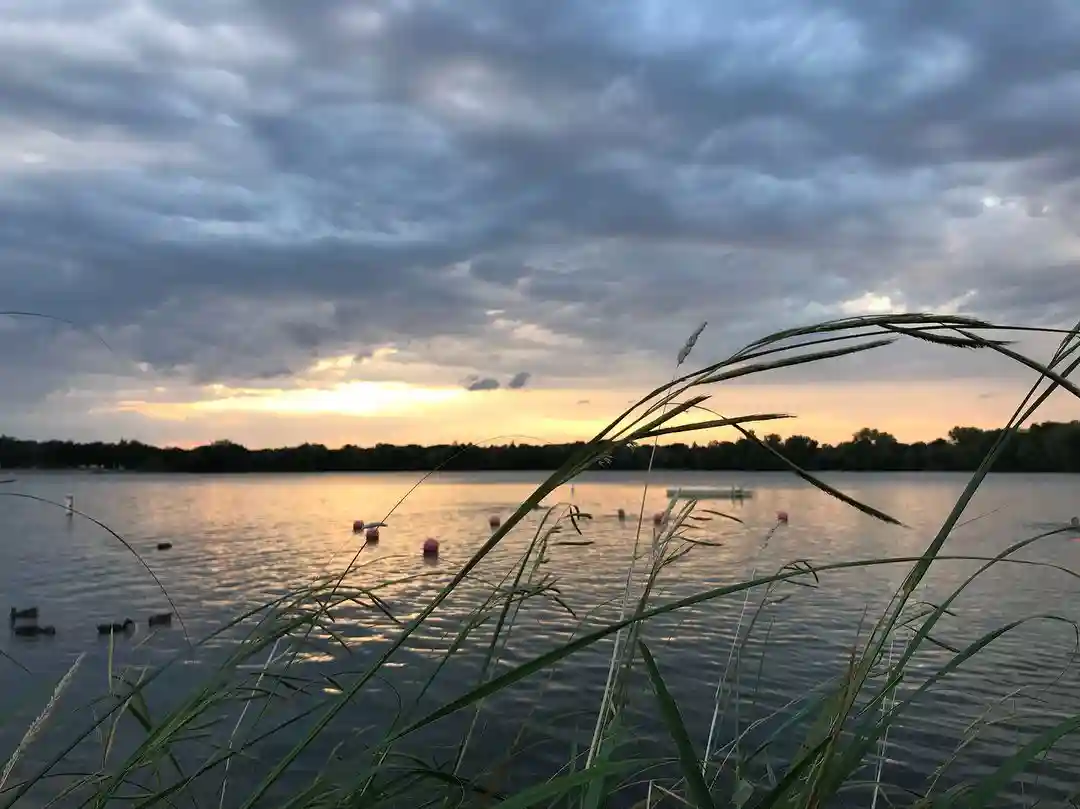
United states Discover the Hidden Gem: Lake Nokomis Beach in Minneapolis, MN
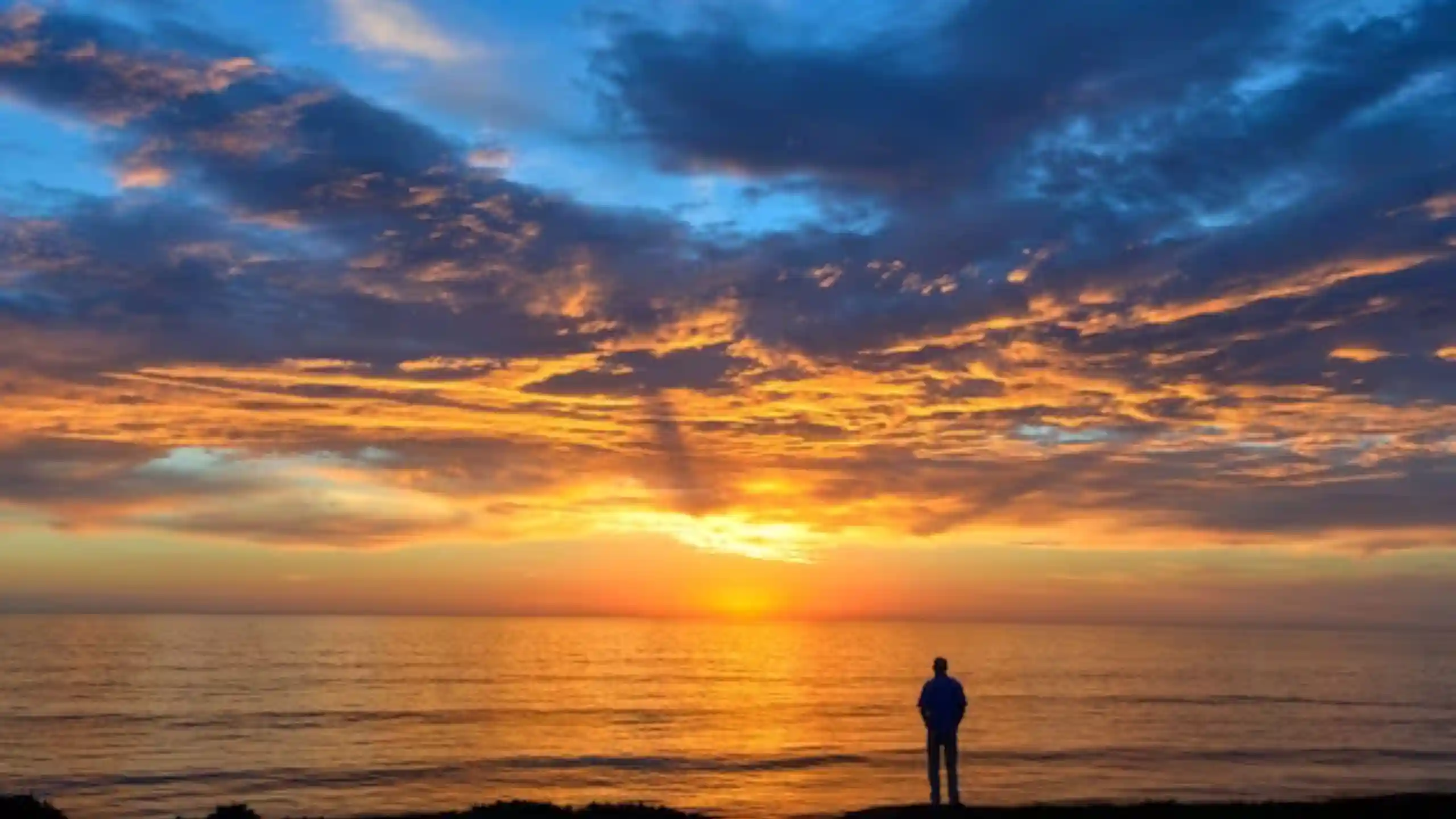
- August 9, 2023
Travel Photography and Videography Sunset Photography: Expert Tips for Capturing Evening Sunset Shots
You may also like.

Mastering Travel Photography: 20 Professional Tips for Stunning Shots
- 16 minute read
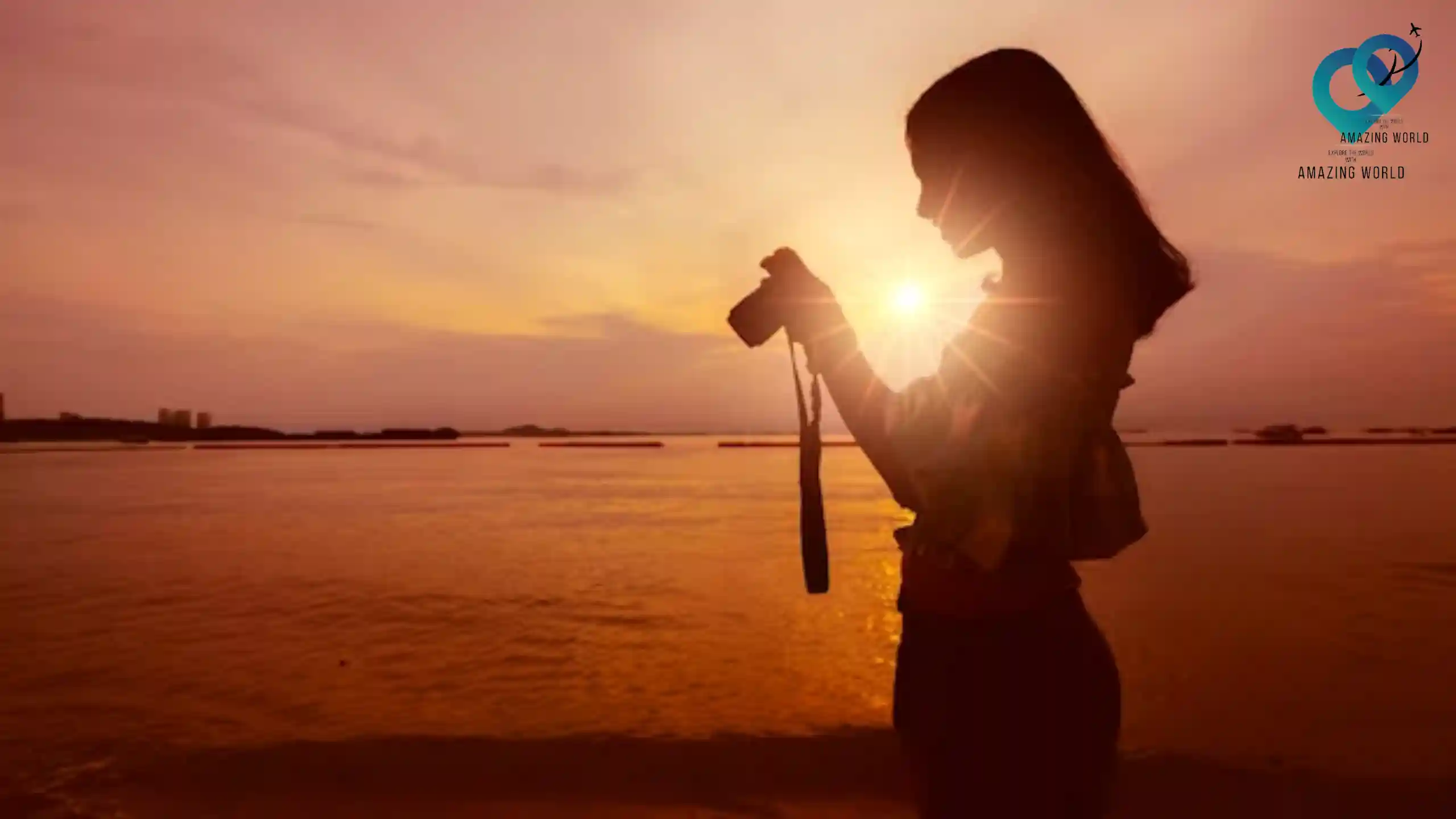
Mastering Sunrise Photography: Proven Techniques for Stunning Morning Sunrise Shots
- 7 minute read

Mastering Twilight Photography: Tips and Techniques for Stunning Day-to-Night Shots
- 15 minute read
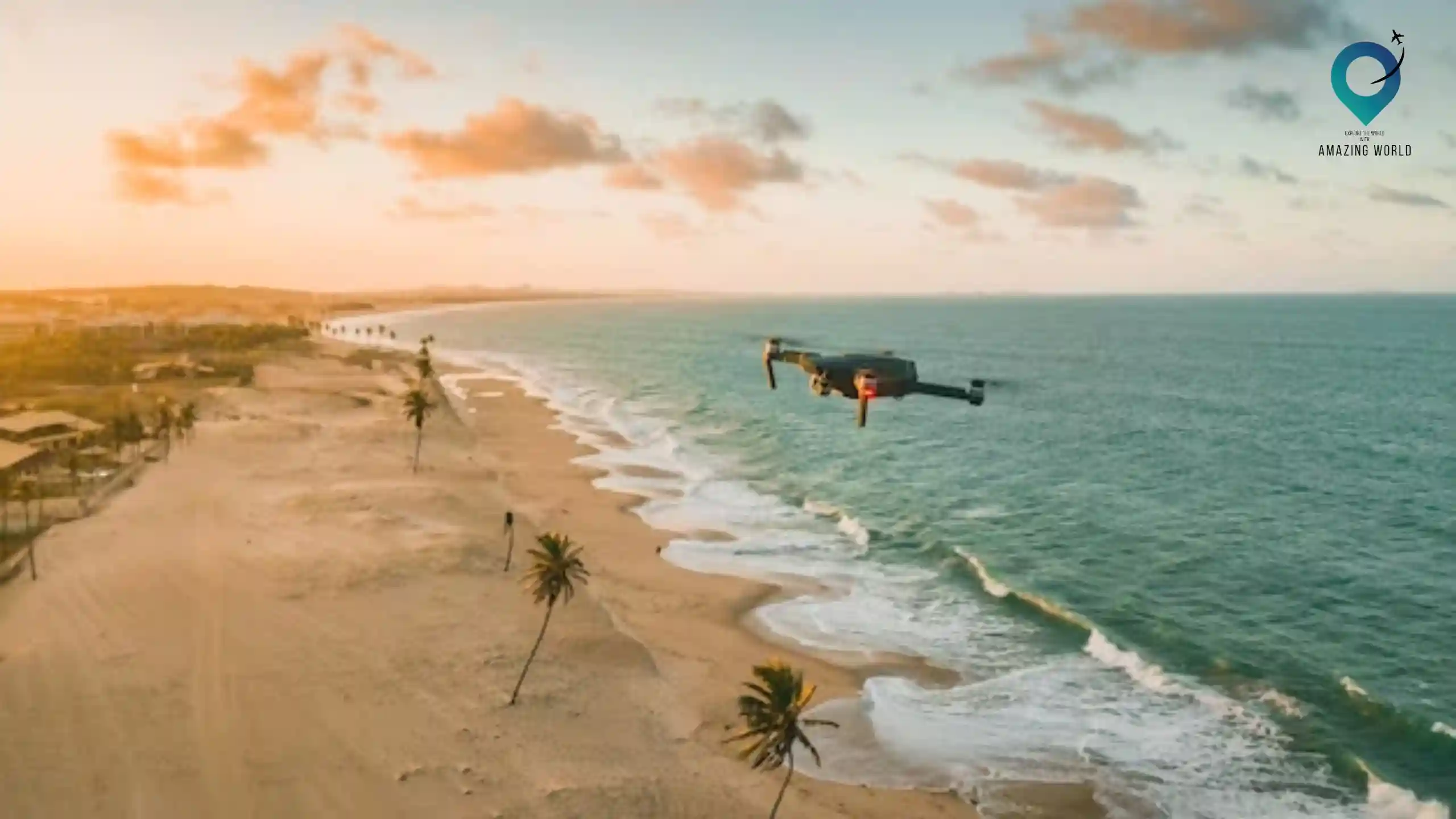
Exploring the World from Above Aerial Adventures with Drones
- 8 minute read
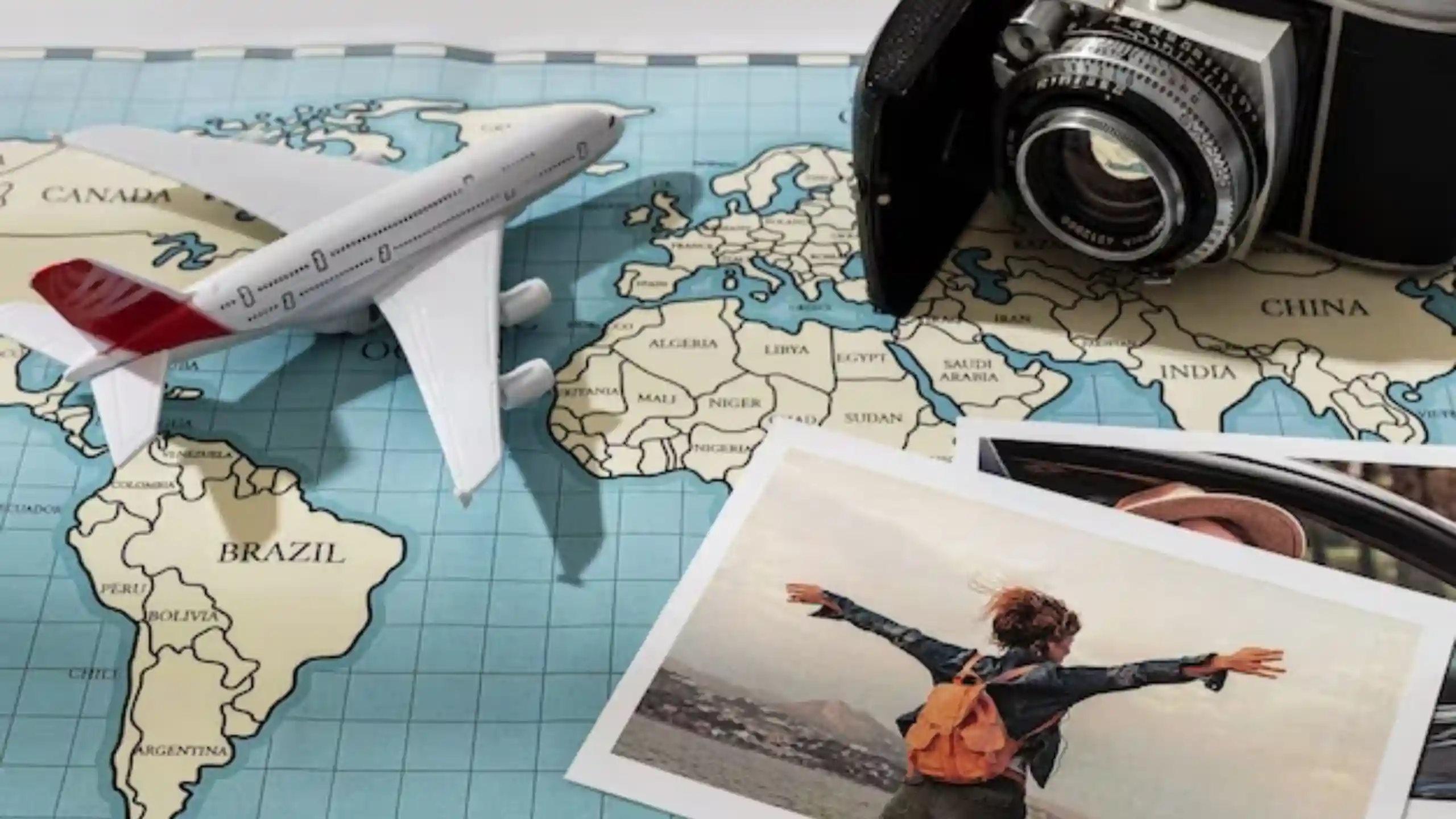
Vintage Travel Photography: The Charm of Capturing Vintage Travel Photography
- 9 minute read

Sunset Photography: Expert Tips for Capturing Evening Sunset Shots
Our latest instagram posts, @amazingworld.travel8.

- Photographers
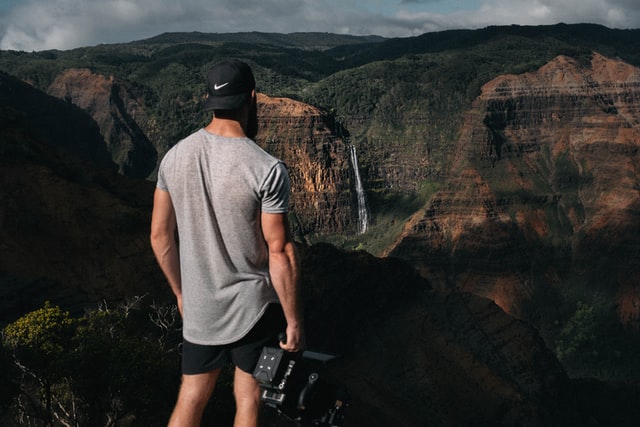
The Best Guide To Become a Travel Videographer
Introduction: what is a travel videographer.
A travel videographer is someone who films various aspects of a trip or vacation. This includes attractions, tourist locations, and even the experience of traveling itself. Travel videographers are often hired by agencies or companies to film promotional videos for their clients. They also have experience shooting in foreign countries or unfamiliar locations, which might be needed to capture footage of certain activities or locations without other people interfering.
A travel photographer is someone who takes photos of various aspects of a trip or vacation.
Training and Education for Your Career as a Travel Videographer
A good travel videographer needs to know how to capture the best shots and create a captivating story with their footage. The best way to learn these skills is by going through an intensive, hands-on training program. Some students may be interested in learning video production, while others may want to focus on photojournalism or film.
There are many different schools that offer programs in these fields which can help you find the one that is the best fit for your interests and budget.
There are a variety of ways this can be accomplished and the type of training program that is necessary depends largely on your interests and budget. There are independent learning programs, immersion programs, and online courses available at most universities. Independent Learning would involve taking video production courses at a local university.
Immersion involves joining a program with international students who will teach you their language. Online courses are typically based on a particular language and provide various resources and material to help you reach the level of proficiency that suits your needs.
Where to Find Jobs in the Field of Travel Videography?
There are many travel videographers who work in the field of travel videography. It is not easy to find a job in this field.
Here are some tips on how to find a job as a travel videographer.
– Know about the latest technology and equipment for filming
– Attend filmmaking courses so that you can learn about the latest techniques and trends in filmmaking
– Apply for jobs on popular websites like Indeed, LinkedIn, Monster etc.
– Apply for jobs through email – Get recommendations from people in the industry
– Join associations related to your field
Conclusion: Get Booked As A Travel videographer Using Platforms
The use of Online Booking platforms has been on the rise in recent years. They make it easy for the customer to get in touch with a videographer and book them for their event.
We have now discussed the importance of booking a Travel videographer, and how to go about it. The next step is to find the perfect platform for your needs.
Platforms like Talents List offers a platform for people to find and book Travel videographers.
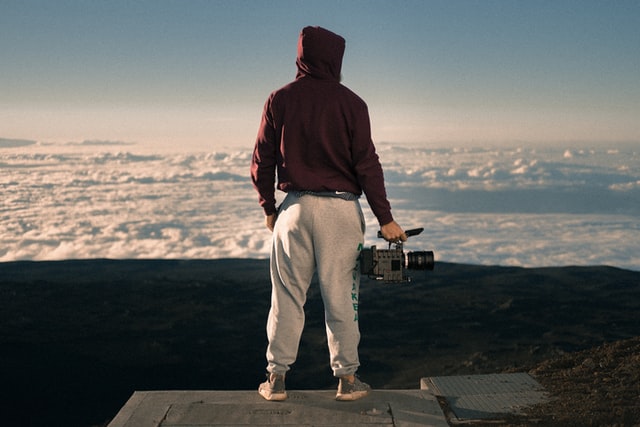
The Best Guide To Hiring A Travel Videographer
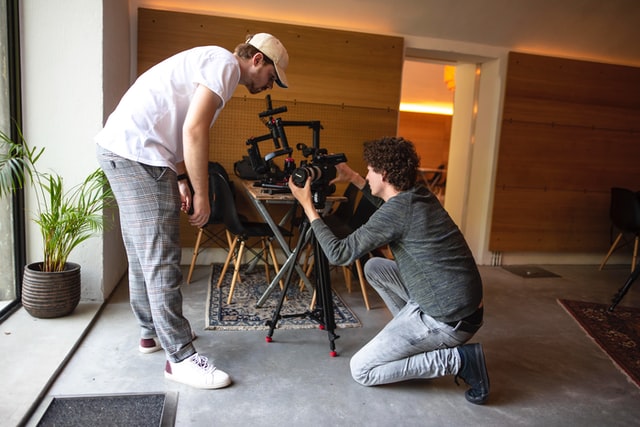
How To Become A Walkthrough Videographer
Recent posts.
- The Best Guide To Hire A Drum and Bugle Band
- How To Start A Drum and Bugle Band
- The Best Guide To Hire A Drum Show Band
- How To Start A Drum Show Band
- The Best Guide To Hire A Doo Wop Band
- Acrobatic (28)
- Comedians (24)
- Dancers (48)
- Impersonators (18)
- Magicians (22)
- Makeup artists (30)
- Models (24)
- Musicians (58)
- Photographers (104)
- Speakers (30)
- Specialty Acts (12)
- Stylists (12)
- Videographers (24)
Related Posts
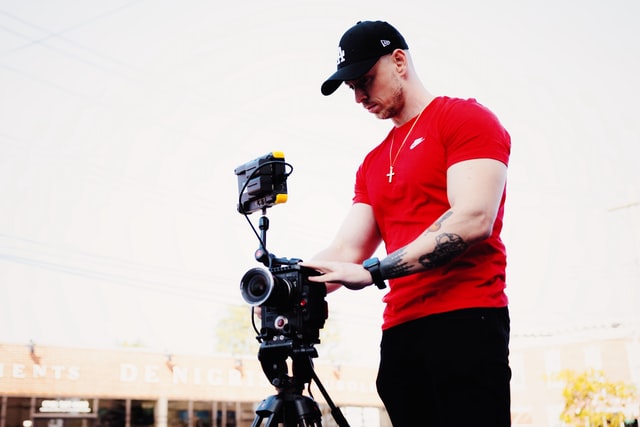
How to Become An Advertising Videographer (tips and tricks)
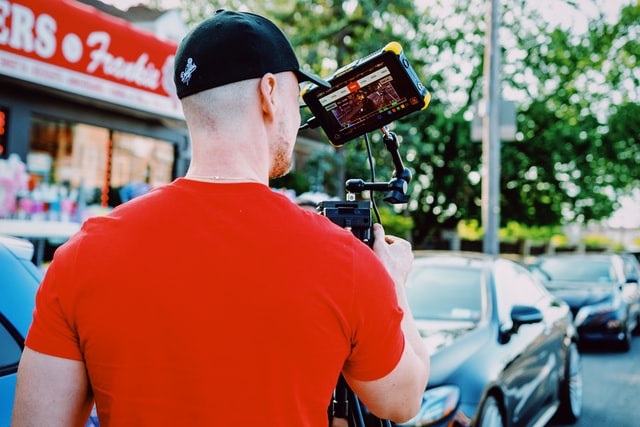
Hiring an Advertising Videographer: How to Find the Best

The Best Guide to Becoming A Corporate Videographer

Home » Blog » How To Be A Travel Youtuber/ Vlogger/ Videographer
How To Be A Travel Youtuber/ Vlogger/ Videographer
So I’ve been keeping something a secret from you guys and gals, a secret that I’ve been working on for over 6 months now. We’ll it’s come time to tell that secret, which is that :
I’ve launched a Travel Video E-Course!!
Almost every day I get messages and emails from readers and subscribers looking to get into travel video and to become a travel videographer, travel vlogger or travel youtuber. Now I’ve tried to answer many of them, but I’ve always felt like there are too many questions, too much to learn and to know. It’s not a few sentence answer, it’s very complicated and there is a lot to learn.
I’ve been making travel videos and have been a travel vlogger for over 6 years! 6 years of trial and error, building portfolios, working on my videos, attending conferences, experimenting with trends to find what works, working with brands, tourism boards and pitching projects. 6 years since I started travel vlogging to get to where I am now. How do you summarize that into a few paragraphs or even a few videos and have it actually be helpful advice? You can’t.
But I want to share this knowledge with you, I want to help you succeed!! As much as I love giving you travel advice, I want to be able to give you advice on how to make travel videos as well.
So I’ve teamed up with my good friends Matt Kepnes of Nomadic Matt and Kristen Sarah of Hopscotch the Globe , to create the ultimate travel video making e-course. We decided the best course of action was to create a university style course of over 18 video units , over 10+ hours of tutorials, resource pages, course work and webinars.

WHAT’S INCLUDED IN THE COURSE

- Learn to get over any shyness and become a superstar on camera with our proven tips and advice. Vlogging, hosting, interviews and more!
- Become an expert on video gear by knowing what to use by seeing what we use and why. Gear guides galore!
- Get the dos and don’ts on filming outside , how to keep your gear safe, dealing with the weather and how to always be on the right side of the law by understanding permits.
- Learn Post Production on how to edit, structure stories, and do voiceovers.
- Learn the most effective methods to growing your channel and viewership through networking, marketing, and social media. Learn where to spend your time – and where NOT to spend your time!
- Learn how to collaborate with other influencers , a vital part of any YouTuber’s career!
- Learn how you can successfully make money with your videos by collaborating with brands, tourism boards, and creating your own products!
- A private Facebook group where you can network, collaborate, and get advice — not only from fellow students but also from myself, Matt and Kristen!
- Quarterly webinars on various aspects of video, covering new things in travel video that come about plus answer any questions you might have.
- And bonus interviews with other successful YouTubers and video producers, where we go into depth about what they have done to find success in their own varied travel video fields.
Film The World: The Ultimate Course to Creating Travel Videos and Vlogging.
I am sooo excited and so happy to share this with you. It’s obviously been a HUGE project we’ve been working on for awhile now and we are so proud of the product. And while yes, it is a paid course , and we’d love to offer it for free, the amount of time, money and expertise we’ve put into this course will show it’s value and it’s worth.
- This course is for those who are serious about learning all the technical aspects of video but don’t want to pay thousands for a college course.
- This course is for people who understand that it’s going to be a lot easier to succeed, grow, and monetize their videos if they have expert teachers pull back the curtain and walk them through it step by step, and along the way get their questions answered.
We can’t wait for you to get started in your travel video making career and I know you will find value in this course.
GET THE COURSE plus more details on Nomadic Matt’s Superstar Blogging School
Money Back Guarantee
Within 14 days of purchasing if you aren’t 100% satisfied with this course or find it helpful we will refund your money. I am that confident you will find this course valuable and educational. There’s nothing like it out there but, if after doing the work, you find it doesn’t meet your needs, we’ll happily and quickly refund your money.
FOR BLOGGERS: Are you currently a travel blogger or digital influencer interested in becoming an affiliate for our course? [ Sign up here ]
Hi Nadine, I’m interested in the course. However, when comparing travel videography courses I’ve noticed that others have posted some sort of “syllabus” for the content. Could you provide something similar? How transferable is the course content to local travel. I live in Hawaii and flying in and out of here is not cheap. Hence I wanted to focus my videos on local travel first.
Hi Nadine, I have the technical knowledge, acquired through university and professional experience, but I have no idea on how to work with brands, tourism boards and how to pitch projects. Is this course a good fit for me? How deep do you go over this topic? Thanks for your attention and congratulations for the course! Cheers.
- Pingback: Full Time Boaters: How to Become Rich While Traveling (With 9 Tips) - My Boat Report
- Pingback: Full Time On A Boat: How to Become Rich While Traveling (With 9 Tips) - My Boat Report
What are you thoughts? Cancel reply
This site uses Akismet to reduce spam. Learn how your comment data is processed .
Get my FREE 90 Day Social Media Content Planner!
- The Americas
- Inspiration
- Packing + Prep
- Tips + Advice
- Contemplations
- Travel Vlogging Online Course
- How to Travel E-Book
- My Travel Gear
- WORK WITH ME
INSTAGRAM FACEBOOK YOUTUBE
- Skip to primary navigation
- Skip to main content
- Skip to primary sidebar
The Epicurean Traveler
Inspiring Cultural Exploration Through Culinary Travel
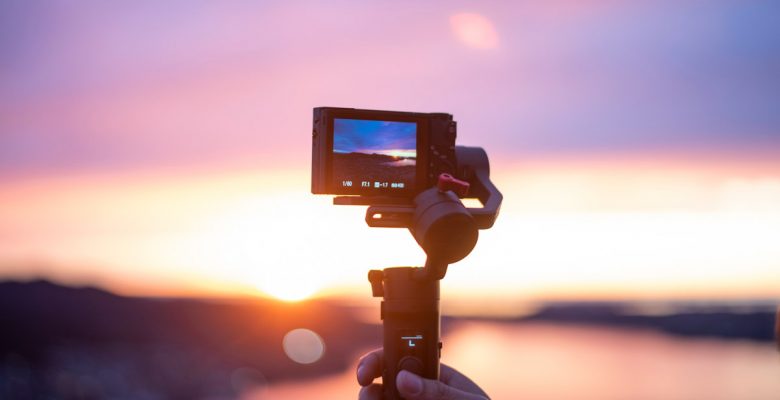
How to Make a Travel Video: 10 Tips for Beginners to Create Compelling Travel Videos
Are you interested in learning how to make a travel video? Maybe you’re hoping to become the next big travel content creator, or perhaps you are an intrepid traveler seeking a way to share your travel memories with friends and family back home.
In this guest post, the pros at the online video editor InVideo share 10 practical tips for making travel videos that grab interest and engage your audience. With these 10 actionable tips for beginners, you can inspire wanderlust among your friends and followers through your own engaging travel videos!
Disclosure: This beginner’s guide on how to make travel videos contains affiliate links. When you click on or make a purchase via one of these links, I may earn a commission.
For the last two years, we were faced with travel restrictions as the world grappled with a global health crisis. Now that many restrictions are being lifted, those of us itching to travel are making plans for our next vacation.
Perhaps more than ever, we want our vacations to be memorable, and we want to share those travel memories with our friends and family through social media. The best way to capture and revisit the moments of a great trip is to create travel videos.
While we may shoot every thrilling activity, scenic view, and delicious meal during the trip, editing travel videos prudently will make them more engaging for your friends, family, and social media followers.
Now, let’s look at some of the practical tips for making a great travel video!
1. Choose the Right Camera for You
Whether you want to start a travel-centric YouTube channel or simply share your trip memories in Instagram reels with your friends, the first step to creating travel videos is acquiring the necessary camera gear. Most importantly, having the correct equipment to create great travel videos begins with choosing the right camera for you.
For example, it is better for those who are not familiar with aperture and shutter speed to opt for a camera with user-friendly automatic settings. Instead of investing in an expensive DSLR like professional travel videographers may use, beginner-level travel video creators can opt for a compact or mirrorless camera that captures high-resolution video at a lower price point.
Therefore, we recommend the Sony ZV-1 for beginner travel vloggers. It’s an excellent camera for shooting travel videos for several reasons.
First of all, this camera was specifically designed with content creators in mind. Therefore, it comes with a 3-inch LCD flipscreen, which is handy when recording yourself. Secondly, the automatic exposure tracks faces to ensure you or whomever you are shooting is well-lit. Third, image stabilization reduces camera shake as you walk around landmarks, national parks, and historic sites on your travels while recording 4K high-resolution video.
At a time when short and full-length feature films have been filmed on smartphones , you may already have your go-to travel camera in your hand as you read this post. In particular, the Sony Xperia 1 III is highly rated for video recording, and Apple’s iPhone 13 Pro and larger iPhone 13 Pro Max offer professional-level capabilities for capturing both travel videos and still photography.
2. Use an Easy Tool for Editing Travel Videos
So many video editing applications for mobile devices and traditional video editing software programs are on the market these days. You may be overwhelmed with the options and wonder which is best for editing travel videos.
For beginners, there is an awesome easy video editing software . It’s a powerful tool with filters, effects, templates, stickers, and more to streamline the video editing process. With this video editor, you can make travel videos to share across various platforms, such as YouTube, Instagram, and TikTok.

3. Watch Travel Videos for Inspiration
Making travel videos may not be as easy as you might have thought! So, first, watch existing travel videos on YouTube, Instagram, TikTok, or other social media platforms to gather ideas.
By watching other travel content creators’ videos, you’ll be inspired to create your own while learning some tricks for framing beautiful shots.
4. Pick Your Favorite Platform
Every website and social media platform has its own video specifications that you need to follow before uploading your travel videos. Hence, it is good to select the platform first before you start your hard work.
Before you even begin shooting your video, you should become acquainted with your desired platform’s specifications. Then upload some videos to test how the platform performs.
5. Prepare Your Camera Settings
Once you have practiced shooting videos at home and are ready to take your trip, you’ll want to keep your camera settings ready. Changing a photo setting while you are traveling can be cumbersome. Therefore, having two memory buttons set to 4K and 25fps will be a good idea.
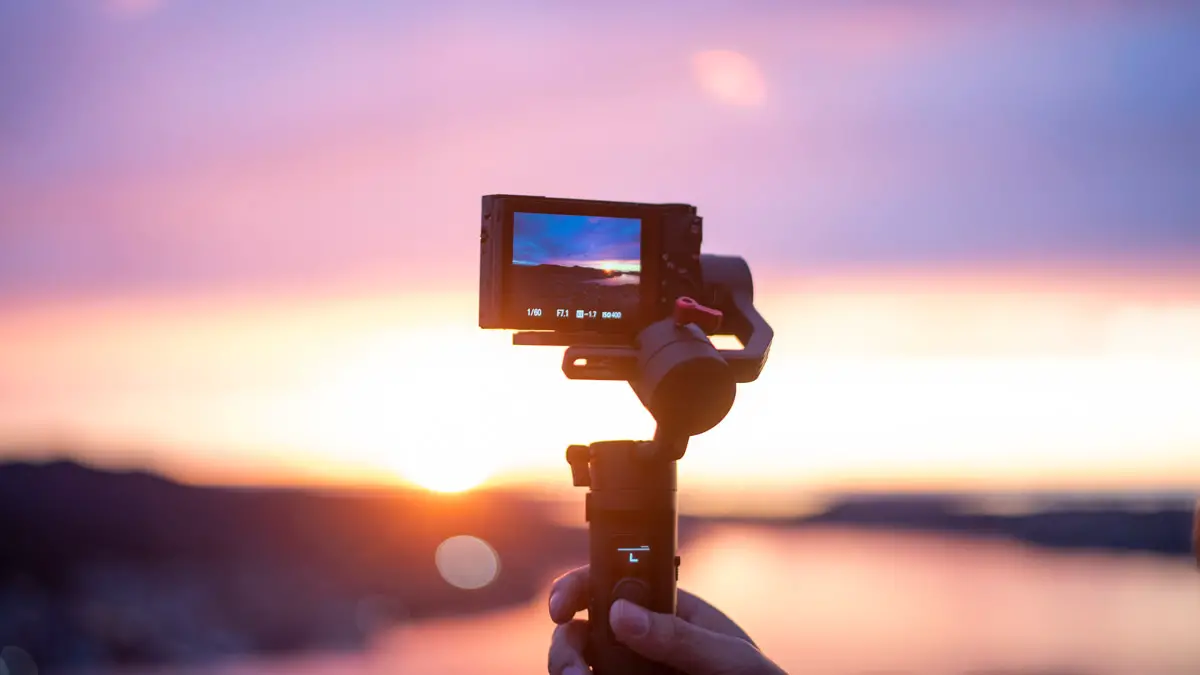
6. Plan Your Travel Video Shoots Ahead of Time
When creating a travel video, planning your shoots ahead of time is key.
Most importantly, you need to think about when to shoot for the optimal natural light. Early mornings and just before dusk — often called the golden hour — are usually best for getting breathtaking shots.
Also, as you plan your travel shoots, keep in mind that shooting too little footage will not let you have enough shots when you begin to edit videos after your trip.
At the same time, overshooting will make your task of editing videos lengthy and cumbersome.
Striking the right balance will take some practice, but, don’t worry, you will get there soon.

7. Tell a Story Through Your Travel Videos
Storytelling is the best way to keep your audience engaged with your travel video. After you complete your trip , try to find a common thread and weave a story out of it.
Of course, the places of historical importance will have their own stories, which you can include while editing videos after your trip .
While you are traveling, record some short clips of the locals and the people you meet during your trip. You can weave their voices and commentary into your video for an interesting contrast to your own voice. This also gives your viewer a break from listening to your voiced-over monologue for the entire video. 😉
8. Keep Video Clips Short and Sweet
Your audience likely has a short attention span , and social media users today move from one post to the next very quickly losing interest faster than a goldfish!
Therefore, you want to keep your travel videos concise and attention-grabbing. For a platform like Instagram, your travel videos should be 90 seconds or shorter and easily understood without sound.
Instead of capturing everything from your vacation in one video, you can create shorter travel videos highlighting various parts of your trip.
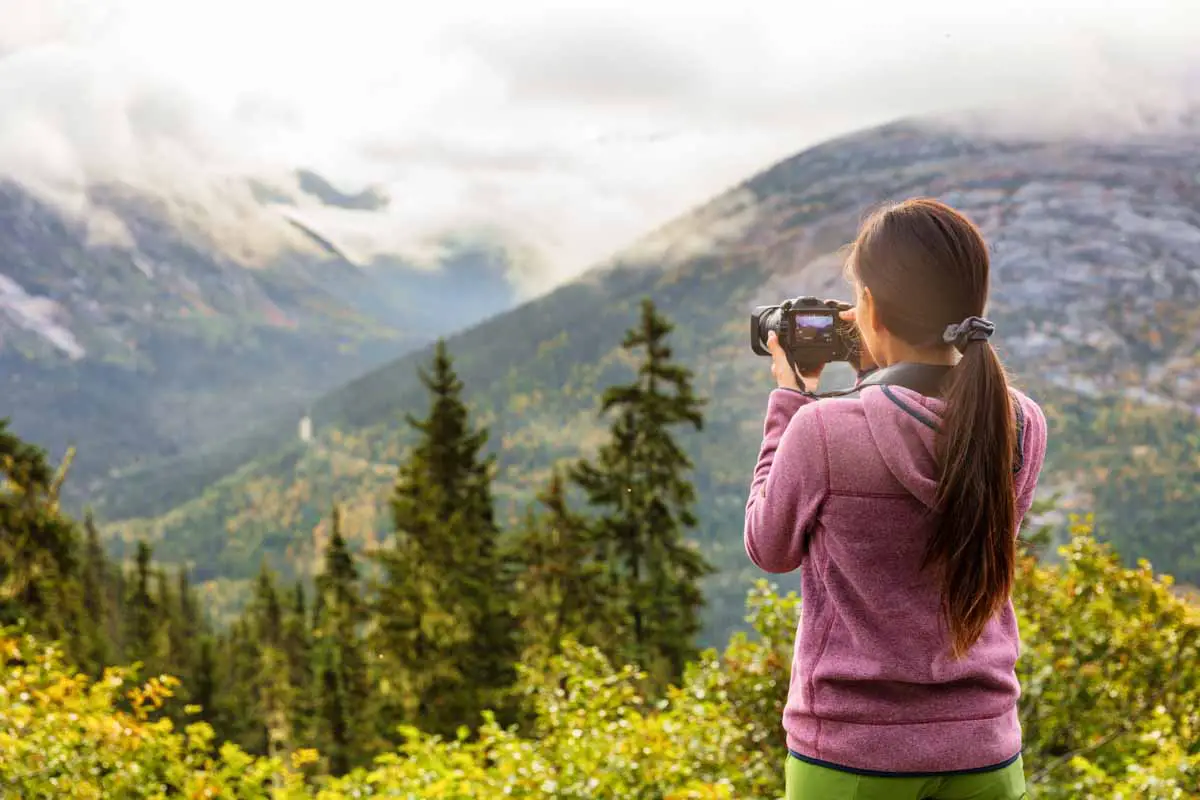
9. Shoot Your Travel Video Using the Rule of Thirds
The rule of thirds is taught in most photography classes, and for good reason. It’s a cardinal rule of both photography and videography.
Usually, in videos, your main subject should not fill the entire frame. Instead, think of your shot’s frame as being divided into thirds both horizontally and vertically. Rather than placing your subject in the center of the shot, you want the main object, person, or animal set off to the side. The photo above is a prime example of this concept.
10. Add Music to Your Travel Video
Lastly, though you want your travel video to tell a story, that is not always accomplished with explanations and voiceovers. Using music will help your viewers emotionally connect with your video.
Therefore, when you have captured the scenic beauty of a destination, it is often better to infuse background music that syncs with the video’s theme.
Final Thoughts on How to Make a Travel Video
Before you book your flights and hotel rooms for your next vacation, begin practicing shooting and editing videos at home. For example, you can take a local day trip and shoot the entire day’s activities keeping the rule of thirds and short clips in mind.
Then, using the video editing platform we shared, get to the work of editing videos . It will require a good amount of practice before you master the art of creating engaging travel videos, but with the tools and tips mentioned in this post, you will be on your way.
Bon Voyage and happy shooting!
Find More Travel Tips!
- Five Tips to Successfully Navigate Travel with Friends
- Five International Travel Documents You May Need to See (and Taste) the World
- Ditching Wings for Wheels: Road Trip Tips for Safer Travel
- Why GPS-Guided Travel Articles Make Sightseeing Easier
- Five Travel Tips for Digestive Health on the Road
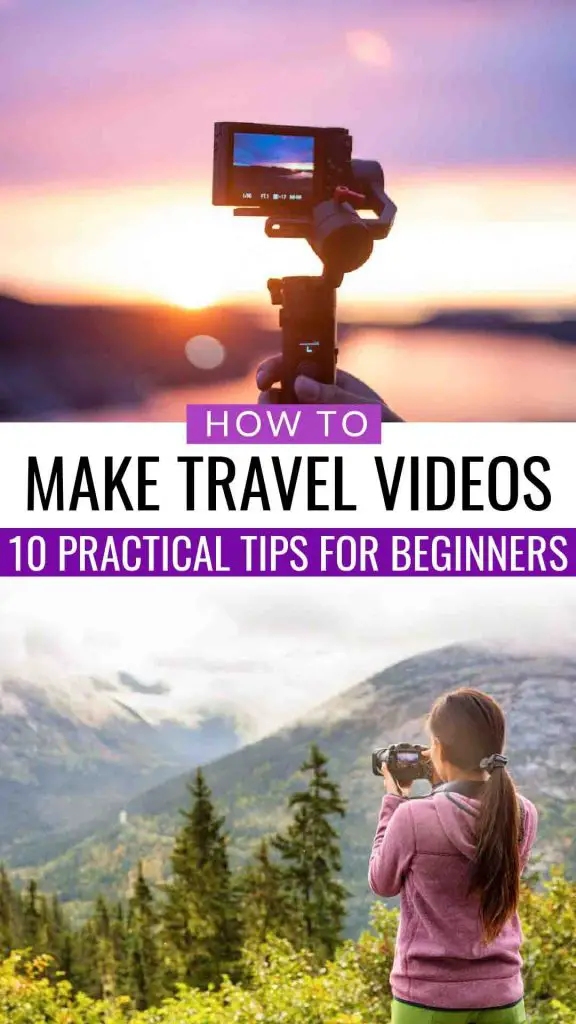
Save the image above to your travel video tips board on Pinterest to easily refer back to this post!
What are your best tips for making a travel video?
Please share your thoughts and tips in the comment section!
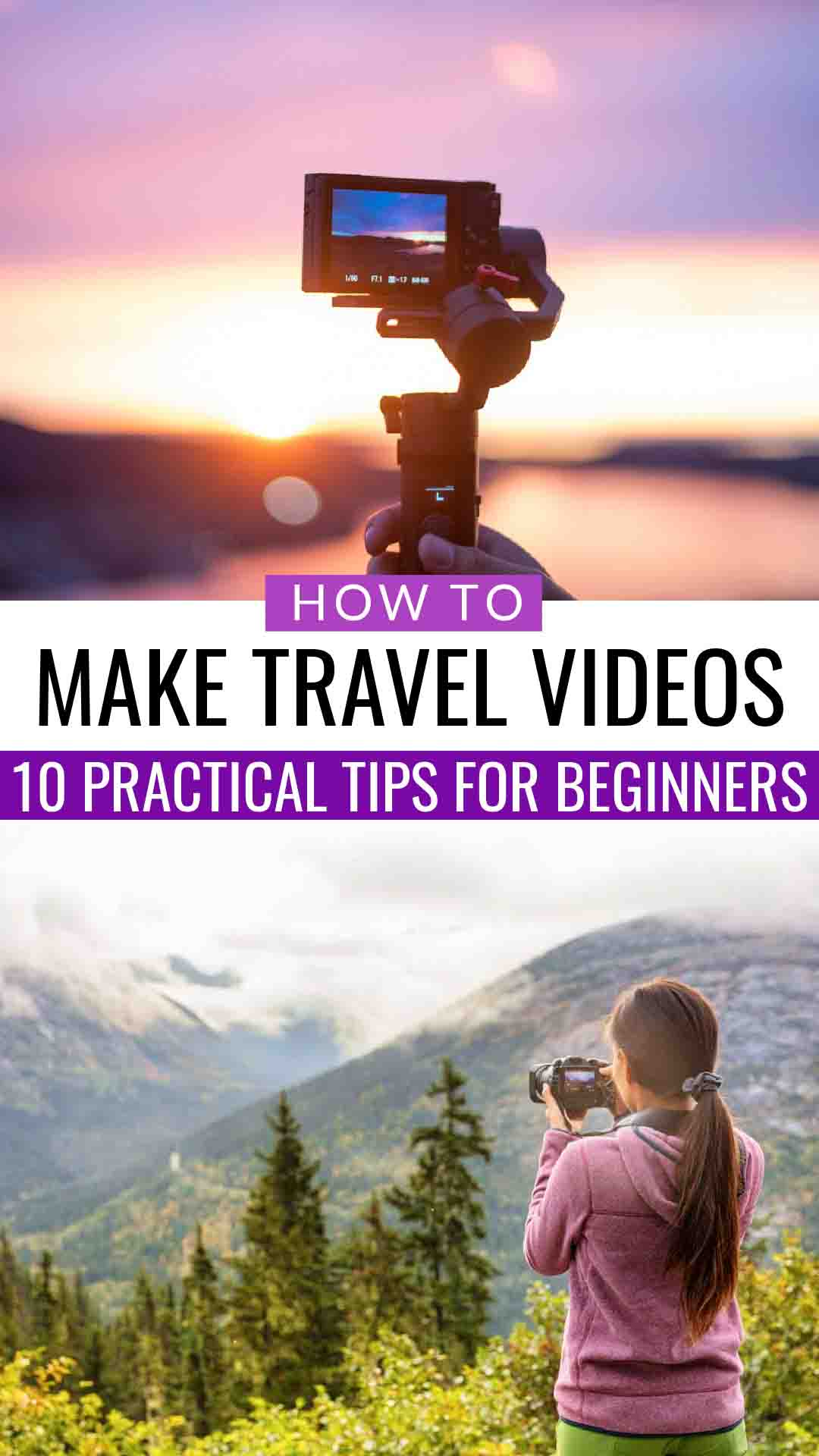
About Erin Klema
Erin Klema is the founder and editor of The Epicurean Traveler, combining her journalism background with her passion for culinary travel. When she isn't exploring the world through unique, local culinary experiences, she enjoys cooking with her husband, planning her next trip, and reading or watching a good rom com.
Reader Interactions
Leave a reply cancel reply.
Your email address will not be published. Required fields are marked *
Notify me of new posts by email.
Privacy Overview
- 116 Pinterest
- More Networks
Can't finish the course?
We'd love to hear your feedback to improve your learning experience.
Existing Agents Login Here

Reset Password

Adventure Filmmaking
with Elina Osborne
Learn how to write, film, and edit your own travel adventure films like a pro.
About This Course
Storyteller and long-distance hiker, Elina Osborne is no stranger to adventure filmmaking. Having created an award winning series that documented her thru-hiking journey on the Pacific Crest Trail, Elina pulls from her experience to cover the ins and outs of how to capture an adventure in a way that does it justice. In this course, Elina breaks down how to get past that post-adventure overwhelm of a hard-drive full of footage, staring at you, waiting to be dealt with. You will learn how to plan and prepare for documenting your adventure, how to balance experiencing vs filming, and how to make your story come alive once you return. This course will arm you with the knowledge and understanding necessary to document your own outdoor adventures to share.
What You'll Learn
How to develop a theme and structure before traveling
The basic gear you need for capturing
Knowing when to capture and when to live the experience
How to incorporate filming your peers (without making them uncomfortable)
How to organize your footage when you're back from a trip
How to make you story come alive in the edit
Choosing the right music and color grading tips
Watch Some Samples
We've pulled out a few clips to give you a better idea of what to expect in the course
Course Breakdown

Introduction

Discover Your Why & Know Your Theme

Don't Let Tools Dictate What You Create

How to Know When to Pick Up the Camera, and When To Leave It

Write, Consume, Get Organized
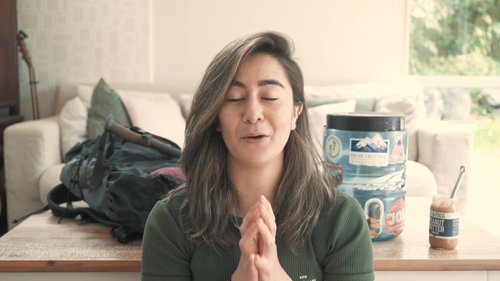
The Story Is Born In the Edit

Meet Your Instructor

Elina Osborne
Elina Osborne is a video creator and storyteller who discovered a newfound love for thru-hiking when she set off to hike the Pacific Crest Trail in 2019. Growing up in New Zealand, Elina has always had a love for the outdoors and a yearning to explore further than her backyard. Since 2016, she’s lived in Brooklyn, New York and Denver. She’s travelled to over 20 of the US states, as well as various countries in Asia, Europe, and South America. After documenting all of these experiences, Elina finally decided to craft the stories she’d been meaning to tell, and put them on YouTube.
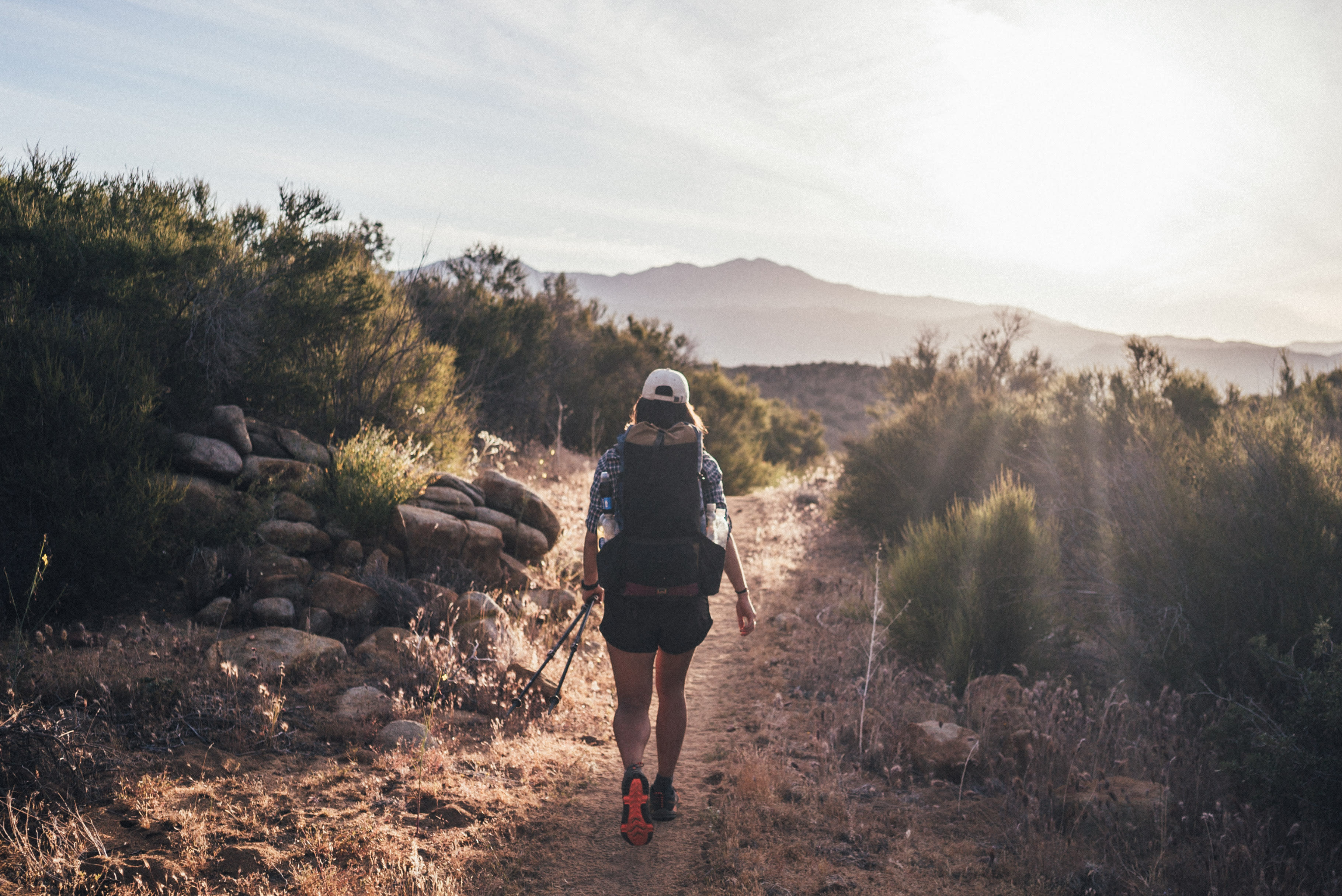
Travel Create Earn
Free Videography and Video Editing Courses
Free videography courses.
Try out some of our Free Videography and Video Editing courses at the Content Creator Academy Youtube Channel. Whether you want to learn to produce video with a drone, gimbal, or even a gopro you’ll find it here. You can also learn how to video edit with two of most popular video editing applications like Final Cut and Premiere Pro at the Content Creator Academy Youtube Channel.
Because our courses are online you can take them safely from anywhere at any time to level up your skills.
Learn a diverse range of current skills from video production, editing, podcast, marketing, and entrepreneurship at our content creator academy. Try out from of our free courses to start from learning stock footage, gimbal film-making, video editing, email marketing and generative artificial intelligence.
Aerial Videography
Learn how to fly and film safely while pulling off amazing shots for Mavic or Phantom Drones.
Premiere Pro Video Editing
Learn core skills to start video editing. You can even try Adobe Creative cloud free for 7 days here .
Final Cut Pro X - Survival guide
A practical class for intermediate video editors looking to do learn some practical skills.
Free Lessons & Footage
Sign up and get Free Access to some of our Creative & Crypto Online Courses from Aerial Video, Gopro, Gimbal Video, Stock Footage, NFT, Video Editing, Generative AI & more.
Success! Now check your email to confirm your subscription.
There was an error submitting your subscription. Please try again.
Elite Video of St. Petersburg
PROFESSIONAL VIDEOGRAPHER SERVICES IN ST. PETERSBURG
ST. PETERSBURG VIDEO PROFESSIONALS
If you’re looking for experienced videographers in St. Petersburg, Elite Video of St. Petersburg is here to create next-level HD video and photography projects for your personal or business needs.
Video has come a long way over the last decade – it can take you to entirely new levels of representation both on and offline. Whether looking to have that perfect wedding shoot, commercial, video ad, still shots, drone footage, even footage you name it, we have a dedicated staff of expert videographers, photographers, editors, and cutting edge equipment to make it a reality.
Taking video to the next level requires creative thinking combined with technical capabilities and pinpoint organization and planning. We’re industry veterans and have developed a wide range of portfolios from real estate drone footage to high school prom photos to large budget TV commercials and corporate events.
Whether you’re looking for a professional video production company for a small or larger project, we’re thrilled to make it happen and are eager to discuss the details. Getting started is easy and just takes a quick phone call to learn about your project so we can provide some info and take the next steps. We know the production process inside and out, and assure you get both a stunning result but also have an incredible experience working with us.
Get A Quote
Expert video services.
We love what we do and are always improving and refining the production process with every project. We’re experienced pros who can get the job done right, make it look amazing, all while keeping the workflow smooth and sticking to a budget. Your time is valuable and it’s our job to take your vision and exceed your expectations while we bring it to life!
We’ve worked with every type of project and live on the cutting edge of design, art, lighting, creativity, coordination and post-production while maintaining a business sense to help guide you through the process to get that perfect result. Let us create an elite experience for you by telling us a few details so we can understand what you’re looking for.
ELITE STANDARDS
The best equipment. Artisans editors. With years of experience we know what gets that perfect picture to create the wow factor.
Organized; thorough; detailed and friendly. We make your project a wonderful experience with amazing results.
We take projects personally. We’re in this for the art and to create something that makes a difference for us all. Let’s have some fun and make it epic!
FEATURED SERVICES

COMMERCIAL VIDEOGRAPHY
Commercial videography requires a keen knowledge about planning procedures and coordination with bigger teams and state-of-the-art equipment. We can take on any challenge when it comes to television and corporate commercial production.

EVENT VIDEOGRAPHY
Whether you’re looking for a festival promo real, large-scale birthday, concert video documentation, or large corporate event video, we ensure an outstanding result and the highest level of production value and professionalism.

REAL ESTATE VIDEOGRAPHY
Real estate buyers begin online – it’s essential you have video to showcase your properties. Putting together your video portfolio can be a lot of work and we offer extensive video and photography services for real estate agents to give you an edge above your competition.

WEDDING VIDEOGRAPHY
The wedding photographer holds an important role during the big day. It’s important to have the perfect photos as well as an expert who’s easy to work, with while creating a remarkable compilation of media for your wedding.

DRONE VIDEOGRAPHY
Whether you’re a real estate agent looking to capture images and video of a property or looking for some awesome shots some awesome Landscaping shots we have you covered with our expert drone operator

PROFESSIONAL PHOTOGRAPHY
We are experts in all areas of media and film, add are complete photography experts ready to shoot any event or special day. We offer competitive pricing and, as usual, complete Elite standards of service and professionalism.

Elite Video St. Petersburg is comprised of a passionate team dedicated to the world of photography and videography. Our experts are all professionally trained and eat, sleep and breathe our craft. We love to serve the St. Petersburg community and love creating projects that help make you or your business amazing. Contact our friendly staff to discuss your project let’s make the vision real!
ST. PETERSBURG PHOTOGRAPHERS
Videography and photography, although not the same and require their own levels of expertise, go hand-in-hand. With today’s equipment an expert needs to understand the dynamics of both since quality Equipment is capable of shooting both fantastic still shots as well as HD video. We are photography Pros add enjoy shooting all of the landmarks in Scenic spots in St. Petersburg.

TESTIMONIALS
Elite Video St. Petersburg did amazing work capturing our local barbecue fundraiser. The friendly staff worked around our guests so well and everyone had such a great time. The video is extremely high quality and a truly good memory of the event.
We hired Elite Video St. Petersburg for some drone pics of our property. Footage and shots came out better than great, and their response time was on point, you could tell they've done this before..
CONTACT US TODAY
We truly love what we do and are excited for every project that passes our way as it’s an opportunity to meet and work with wonderful people and create something completely unique and amazing for you. We understand how important great video and photos are for just about everything these days, and go above and beyond to make sure your experience is truly an Elite one. We’re happy to answer any and all questions and help coach about what the best options are. Call us today to chat with one of our friendly staff.
Ready to Shoot?
… Lights, Camera, Action !
Terms and Conditions - Privacy Policy

St Petersburg in Winter: the ultimate travel guide
Due to the current situation, I advice against travel to St.Petersburg in winter or Russia at the moment. All affiliated links related to Russia have been removed. But I have decided to keep my posts about Russia as it remains a beautiful country. I hope that circumstances change and that travel is possible again in the near future.
This post is all about St Petersburg in winter. Russian winters are famous for being cold and harsh. You might wonder why you should visit St Petersburg in winter in the first place. In fact, most visitors try to avoid St Petersburg in winter. But let me tell you that there are plenty of reasons why this is a great time to visit the city.

Why visit St Petersburg in Winter
Yes, St Petersburg in winter means the average temperature is below zero and it gets dark early, but it is a beautiful time nevertheless. As long as you dress warm enough, visiting St Petersburg in winter will be very rewarding. St Petersburg is also known as the Venice of the north, now imagine a frozen Venice covered in a blanket of snow.
That is what St Petersburg in winter is like. Snow is guaranteed between December and March. Even the large Neva river is hidden under a thick layer of ice during this time of the year. The canals lined with palaces and churches are solid frozen and a joy to behold.
Simply put, St Petersburg in winter is a magical winter wonderland. Walking around in the palace gardens is like a Russian fairytale with enchanting views everywhere. And with less tourists around, you can see everything in peace and quiet.
St Petersburg in winter is also a festive time of the year with several events such as christmas, new year and maslenitsa. As a result there are Christmas fairs, light decorations, ice skating rinks and winter shows where you stuff yourself with blini’s (pancakes) and sbiten (russian gluhwein tea).
As you can see, there are plenty of things to do in St Petersburg in winter. The city has an impossibly high number of interesting museums, art galleries, churches and palaces. Enough so that you could spend weeks in the city. In addition, there is a range of fun outdoor activities in and around St Petersburg and lots of traditional food to try.

How much time do I need for St Petersburg in winter
How much time you need for St Petersburg in winter is a difficult question. There is so much to see and do that you could easily spent a whole week in the city like I did. However, I realize that not everybody has that amount of time available to them.
4 days in St Petersburg is a good compromise. This would allow you to see the top attractions within the city and include one daytrip to one of the palaces outside of St Petersburg. For some inspiration you can check my 4 day St Petersburg itinerary .
The best things to do in St Petersburg in Winter
1. visit a museum.
The winter is of course a good time to visit one of St Petersburg’s excellent museums. I’m not really a museum kind of person, but the ones in St Petersburg are some of the best in the world. It’s not just the collections, but also their locations in the 18th and 19th century palaces that make them worthwhile to visit.
Insider tip : most museums have a free entrance day each month. Although it will be very busy during these days it is a great way to save money if you are on a budget.

The most famous museum is of course the Hermitage . It has one of the largest art collections in the world with over 3 million items collected by the Romanovs over almost 3 centuries. While Peter the Great already started the collection, it was Catherine the Great that contributed the most. During her life, Catherine acquired over 4,000 paintings, 38,000 books, 10,000 gems, 10,000 drawings, 16,000 coins and a natural history collection filling two galleries.
It was tsar Nicholas the first who opened the winter palace as a museum to show parts of the collection to the public. It is so huge that only a small percentage is on permanent display. This includes the egyptian and classical antiquities and paintings from all over Europe covering different time periods and various styles.
The rooms of the Hermitage are just as impressive as the collection. The Winter palace used to be the official residence of the Tsars until the Russian revolution when the palace was looted and damaged. It then soon reopened as a state museum and some of the rooms such as the malachite room, the dining room, the library, the throne room and the big hall were renovated back into its original state.

Fabergé museum
The Fabergé museum might be very small compared to the Hermitage, but what it lacks in quantity is well compensated by its quality collection of Fabergé’s jewellery art. Faberge’s unique style was rich in decorations and intricate details. It soon caught the attention of the Royal family who appointed him to be their imperial jeweller.
Most famous are the elaborate Fabergé eggs that the jewellery firm made each year to present to the Tsars during easter. The museum has 9 of them along with other items made for the Romanovs such as clocks, tea sets, silverware etc.
The museum is in the Shuvalov palace and therefore the architecture and its rooms are just as pretty. Just look at the impressive staircase or the decorations in the blue drawing room to get an idea of the wealth of the 18th and 19th century elite.

Kunstkamera
KunstKamera or the Peter the Great Museum of Anthropology and Ethnography was the very first museum in Russia. It was established by Peter the Great who wanted to learn more about humans and the world. He consequently collected more than 2 million items.
Besides the regular cultural exhibitions, there is also a section of the museum focused on natural curiosities. For this collection, Peter the great acquired several human and animal fetuses with abnormalities. He displayed them as accidents of nature to discourage superstitious beliefs.

2. Visit a palace and stroll through palace gardens
St Petersburg is a city characterized by the royal family. As the Romanovs and their network of rich families grew in the 18th and 19th century, so did the number of palaces throughout the city.
Most, like the Sukharov and the Hermitage winter palace, have transformed into museums. Worth visiting for both their collections as well as the palatial rooms. What is often overlooked is that most of them also had extensive gardens that are often free to wander around in. On a beautiful sunny day in winter this is where you want to go to see the fairytale winter landscapes.
Mikhailovski palace and gardens
Right in the center, near the church of the Savior on the spilled blood, lies the Mikhailovski palace. It is now home to the Russian Museum . Even if you have seen enough museums it’s worth coming here for a stroll in the small, but scenic Mikhailovski gardens.
Just north of the Mikhailovski gardens are the larger summer gardens. The fountains might be closed and the statues packed to protect them from the snow, but this is a very peaceful and serene place to visit in St Petersburg in winter.

Yusupov palace and gardens
The Yusupov palace is one of the most popular places to visit in St Petersburg, because it was the site of the murder of Rasputin. The rooms are also luxuriously decorated and therefore most people overlook the scenic gardens. In winter it is particularly beautiful with its frozen lake.
Yelagin island
The Yelagin palace was built as a royal summer palace during the reign of Alexander the third. It was meant as a retreat on a small island in the Neva river. Nowadays Yelagin island is a very popular weekend destination among the locals looking for some peace and quiet.
With its network of paved pathways, ponds, canals and gazebos it is a beautiful place to visit. The park sees lots of cultural events such as the celebration of christmas, new year and maslenitsa. In winter there is also a winter fair and ice skating rink.

3. Go to church
St Petersburg has plenty of churches and they are perfect for a quick stop to warm up in St. Petersburg in winter. It is a multicultural city and although every faith is represented, most churches are Russian orthodox and decorated with icons and paintings. Below are the most beautiful churches in St.Petersburg.
Church of the Savior on the Spilled Blood
The church of the savior on the spilled blood is a relatively new church. However, its design was made with ancient Russian architecture in mind. It was built in the early 20th century on the location where Tsar Alexander the Second was killed in 1888. It is worth visiting inside for the lavish decorations containing paintings and mosaics with scenes from the bible.

Kazan cathedral
The Kazan cathedral on the Nevski prospekt is dedicated to our lady of Kazan, one of the most sacred icons in the Russian orthodox church. The design was inspired by the St Peter’s Basilica in Rome and the bronze doors by the Baptistery in Florence.
The building was meant to impress people with its size. The interior is like a big hall with columns on each side. Look closely and you will see there are numerous sculptures as well as icon paintings to look at.

Alexander Nevski monastery
The Alexander Nevski monastery is the oldest and largest Russian orthodox monastery in St Petersburg. It is a large complex with a cathedral, two churches, a cemetery and a bakery. It was built by Peter the Great who assumed that this was the location where Prince Alexander Nevski won a battle against the Swedes in 1240.
This place is worth a visit, more because of its importance for St Petersburg and its history than for its beauty. For local people the monastery remains one of the most sacred places in St Petersburg. The graveyards are the final resting place of some famous Russians such as Tchaikovski and Dostoevski.

St Isaac cathedral
The St Isaac’s cathedral is the biggest cathedral in St Petersburg dedicated to Saint Isaac, the patron saint of Peter the Great. It was tsar Alexander the first that wanted to have a large cathedral, but there were concerns about the unstable soil. Construction took 40 years and the foundation was strengthened with more than 25,000 piles.
In Soviet times the church became a museum of the history of religion and atheism. It has remained a museum ever since, nowadays mostly showcasing its lavish interior and golden dome with angels.
Plans to give the cathedral back to the Russian orthodox church met with protests from citizens that want to keep it as a museum. The Russian Orthodox Church itself also hasn’t claimed it back yet. Church services are only held in a small chapel in the left side of the cathedral.

Nikolski cathedral
The Nikolski cathedral is also known as the Naval church, because it used to be the main shrine for the Russian Marine. It is close to the Marinsky theatre and worth a quick stop if you are in the neighbourhood.

4. The Peter and Paul fortress
The Peter and Paul fortress is one of the oldest parts of St Petersburg. The citadel was the first thing to be built by Peter the Great to protect his new capital against attacks from the Swedes. It was later notorious for its prison where the Romanovs kept political prisoners in harsh conditions. The fort also had its own cathedral where most of the Romanovs are buried.
Insider tip : come during midday when according to an old tradition a cannon is fired.

5. Watch a performannce at the Mariinsky theatre
The Mariinsky theatre offers a perfect night out when you are in St Petersburg in winter. It opened its doors in 1860 to become the major theatre in the city where artists like Tchaikovski had their premieres. Nowadays it hosts excellent ballet and opera plays.
6. Going on a St Petersburg Metro tour
Another great indoor activity you can do in St Petersburg in winter is the metro. Above the ground, the city is all about the Romanovs, but below the ground you get a sense of its Soviet history. St Petersburg metro might not be as famous as the one in Moscow, but some of its stations are just as beautiful.
The St Petersburg metro was built with the same Soviet ideology that they were to be the palaces of the people. Therefore you will find lofty ceilings, lots of marble and communist symbols
Some of the stations are actually more beautiful than any on the Moscow metro. According to the Guardian, Avtovo is among the top 12 most beautiful metro stations in the world.
Insider tip : It’s very easy to organise your own self-guided St Petersburg metro tour . As long as you don’t leave the station it will cost you less than 1 euro.

7. Buy Soviet memorabilia at Udelnaya
For more Soviet history head to Udelnaya. St Petersburg’s biggest flea market remains open in winter and is one of the best places to find genuine Soviet memorabilia.That said, you will have to look good, because people sell a lot of secondhand trash as well.
Insider tip : the most interesting stalls selling antiquities are only open on the weekends.

8. Watch Soviet era architecture
In the center of St Petersburg with its baroque and classical 19th century architecture it’s like the Soviet times never happened. It’s very different from Moscow where Soviet architecture is everywhere. However, it was in St Petersburg where the Russian revolution began when the Bolsheviks with Lenin took over the city. Unfortunately, If you want to see some of its communist legacy you need to go all the way to the southern outskirts of the city.
Moskovsky prospekt is where you can see the typical Soviet era buildings. There is a large Lenin statue at Moskovski square that stands in front of musical fountains and the impressive House of the Soviets . The House of the Soviets was supposed to host the administration of the local government, but the building was never used as such. It’s construction finished just before the invasion of Nazi Germany and was consequently used by the Red Army instead.
After the war, the victory square and victory park were built nearby as well as more Stalinist apartment buildings. The 48 meter high obelisk that is the monument to the heroic defenders of Leningrad is at the end of Moskovski prospekt and hard to miss.
Insider tip : It is on the way to Pulkovo airport so when coming from or going to the airport you will drive by. On weekends and holidays starting at ten in the morning, every two hours classical music rings through the square for twenty minutes.

9. Shopping along the Nevski prospekt
The Nevski prospekt is the most famous street in St Petersburg. It runs all the way from the Alexander Nevski monastery to the Hermitage. Here you will find St Petersburg best shops, restaurants and the most beautiful buildings and bridges. Being at the heart of the city, it’s always busy, even in winter.
Major attractions on the Nevski prospekt include the Kazan cathedral, the Singer house with its bookstore, the Stroganov palace and a monument to Catherine the Great. The original 18th century shopping mall and 19th century department store are also still up and running, but then with modern brand stores.
As you walk along the Nevski prospekt you will cross several beautiful bridges crossing frozen canals. Don’t miss the beautiful Anchikov bridge with its horse statues. For more details I can recommend my self guided free walking tour of St Petersburg that goes for a big part along the Nevski prospekt.

10. Walk along the Neva river embankment
Another great place to go for a walk in St Petersburg in winter is the Neva river embankment. Yes it will be cold and windy, but the frozen Neva is quite the sight. Ice fishing is hugely popular and you will often see men sitting on small chairs patiently waiting for their catch besides a hole in the ice.
I can recommend going to Vasilievsky island . It’s embankment, also known as the strelka , is not only home to some of the oldest and most important buildings in St Petersburg, it also offers beautiful views on the Winter palace and churches on the opposite side of the river.

11. Steam it out in a Russian banya
One of the most fun things to do in St Petersburg in winter is to experience a Russian banya. A traditional banya is a bathing house and sauna where people not only come to get clean, but also to socialize. There are shared rooms that you share with other people of the same sex or you can book private ones.
Prices vary a lot and depend on comfort. The most expensive banya’s in St Petersburg are more like a spa with pools and additional services like massages and beauty treatments. The cheaper ones are more basic, but they all have at the minimum a shower, sauna room and small pool to cool down again.
For the real Russian tradition let yourself be whacked by birch (or oak) tree twigs called venik. It helps the blood circulation and Russians believe it has lots of health benefits.
12. Go ice skating on new holland island
New Holland is among the oldest parts of St Petersburg. Once Peter the Great was determined to build a new capital in the swampy grounds, he brought Dutch builders to help him build a European style city. It’s therefore not surprising that the network of canals and bridges are somewhat similar to Amsterdam, but then with a more royal and elegant look.
The Dutch stayed in wooden barracks on an island in the Neva river that was soon known as New Holland. Not much later the navy took over and built more sturdier stone structures. Nowadays the place feels quite new and modern after a huge restoration project in 2011.
It is now a hip place aiming for the younger generation in the city with club-restaurants, cafes, a theater, a cinema, exhibition halls, art galleries, educational programs, herb gardens and children’s playgrounds. In winter there is a large ice skating rink that is very popular among the locals.
13. Visit the palaces outside St Petersburg
The palace gardens in St Petersburg are nothing compared to the large gardens in the palaces just outside St Petersburg. For a truly magical winter wonderland this is where you should go.
Peterhof is one of the most famous palaces outside of St Petersburg. Peter the Great, inspired by Versailles in France, started the construction in 1714. After him the Russian Tsars all continued to build and expand the extravagant Peterhof palace grounds.
The main palace with its impressive cascade full of fountains and statues is the main attraction, but it’s a large complex that has much more to offer. In its large lower and upper gardens are several pavilions, smaller palaces and a church.
Once temperatures fall below zero, the fountains will be turned off. However, its spectacular location with views on the frozen gulf of Finland makes it one of the best places to visit outside of St Petersburg in winter.

Oranienbaum
Very close to Peterhof is the less opulent palace of Oranienbaum. If you are looking for a peaceful and quiet place away from the crowds in Peterhof this palace with its large gardens is worth considering.
In fact, I personally found the winter landscapes in the gardens here more impressive than in Peterhof.

Tsarskoe Selo
The blue Catherine Palace in Tsarskoe Selo is another popular palace outside of St Petersburg. Here it is the interior and the beautiful decorated rooms that attracts hundreds of visitors every day. Its gardens are not as big as Peterhof or Oranienbaum, but in winter nonetheless home to some fairytale-like scenes with lots of snow and frozen lakes.

Although it lacks the extravagance of Peterhof and Tsarskoe Selo, this was one of my favourite palaces to visit in St Petersburg in winter. Pavlovsk was a gift from Catherine the Great to her first son Paul. With his good taste in fine arts he developed a simple, but beautiful and elegant palace surrounded by a large park with ponds, lakes and forests.
The park is huge and I spent a whole afternoon wandering around in this magical winter wonderland. Near the palace you will walk past scenic bridges, pavilions and statues, but the further you get from the palace the more you feel like you are in a forest surrounded by nature.
On weekends it is also very popular among locals looking for some fun in the snow. People come here for cross country skiing and sleigh riding.

14. Try Russian winter food.
Russian cuisine is as varied as its vast country. From dried reindeer meat in the arctic regions to Uzbek stylo plov. Not every dish is a hit among travellers, but there are definitely some hidden and delicious gems in Russian cuisine, especially if it comes to winter food. A lot of its recipes seem to be made to warm you up during the coldest times of the year. Here are some of my favourites that I think you should try.
So let’s start with its soups. The controversy of whether borscht is ukrainian or russian will never be satisfyingly solved, but it is one of the most beloved soups in Russian speaking countries. The main ingredients in borscht are red beets and other fresh herbs and vegetables. Sometimes there is meat too and preferably served with sour cream. Another soup comes from Karelia, the area just north of St Petersburg. This region is famous for its delicious fish soups. Ukha is a delicious soup with salmon, potatoes and cream. It tastes divine.
For lunch my favourite dishes were blini’s and pelmeni. Blini’s are Russian buckwheat pancakes that come with sweet or savoury toppings like honey, walnuts, cheese, meat, salmon or even caviar. Pelmeni are another perfect lunch. These dumplings have a variety of fillings from mushrooms to potatoes to meat. They can be served fried, cooked or in a broth with sour cream as a side dish.
Russia also has some warming winter drinks. Sbiten is a fruity tea with spices that is absolutely delicious. They are available with and without alcohol. Medovukha is a light alcoholic drink made from fermented honey.

Where to eat in St Petersburg in Winter
St Petersburg is not the cheapest city to go out for dinner, but there are a lot of excellent restaurants representing almost every cuisine in the world. Below are some of the best places for budget travellers.
As a budget traveller I loved Teremok . This popular fast food chain in Russia has several branches in St Petersburg. It specializes in blini pancakes with every topping imaginable and they do a pretty good job. You will find other traditional Russian dishes as well such as pelmeni, vareniki and borscht.
Recommended : My personal recommendations are the blini’s with honey and walnuts, sbiten (fruity spiced tea) and ukha (karelian creamy soup with salmon).
Pelmeniya at the Fontanka river embankment is all about dumplings. Of course there are the Russian pelmeni and vareniki, but you will also find Georgian khinkali, central asian manti’s, italian raviolis and chinese dim sum. Choose your preferred filling and enjoy.
Recommended : Vareniki with mashed potatoes and mushrooms
Shtolle is a Russian chain making delicious russian stuffed pastries with fillings from meat, salmon, mushrooms and potatoes. They make a filling snack or lunch. They have several branches in St Petersburg, including one on the Nevski prospekt.
Recommended : Shtolle filled with salmon and brocolli
Stolovaya No 1
Stolovaya No 1 is one of the cheapest places to eat in St Petersburg. It’s inspired by the Soviet canteens that served basic meals for the average labourer.
It’s a buffet style restaurant where you pay per item. Expect Russian dishes like cutlets, meatballs and sausages with your choice of rice, mashed potatoes or buckwheat (grechka).
It’s not necessarily the best food out there, but it’s not that bad either and it fills your stomach for a price as low as it can get. There are several branches, including a couple on the Nevski prospekt.
Recommended : Chicken Kiev with potatoes, Ukha or borscht
Market place
This self service buffet style restaurant on the Nevski prospekt serves both Russian and international food of good quality. There is plenty of choice at market place as well for vegetarians and prices are reasonable.
Recommended : The menu varies per season, but the shaslicks are delicious.
Pkhali Khinkali
St Petersburg is a great place to try Georgian cuisine and Pkhali Khinkali is one of the best budget Georgian restaurants in the city with a menu that includes classic Georgian dishes like Khinkali and Khachapuri. However, there are also stews, salads, soups and desserts. The menu has pictures making it easier for you to choose.
Recommended : Kharcho soup and georgian spicy salad

Events in Sint Petersburg in winter
St Petersburg in winter is also the time of some great events and celebrations in the city.
Christmas and new year
First there is christmas and new year. The Russian orthodox church celebrates christmas on the 7th of january. A week of holidays follows till the Russian new year on the 14th of January. At this time, the city is beutiful with lights and christmas trees.
The next big festival celebrates the end of winter. Maslenitsa is one of the oldest surviving slavic holidays. Although its origins lie in a pagan sun festival it is now the last week before the fasting period of Lent. Celebrations include lots of blini’s (pancakes) and traditional games in the snow such as sleigh riding, ice skating, snow ball fights, bonfires and the burning of the maslenitsa doll at the end. In St Petersburg there are big maslenitsa fairs at Yelagin island, New Holland island and Pavlovsk.

Where to sleep in St Petersburg in Winter
Hostel 1703 : Hostel 1703 is a great hostel in the center of St Petersburg with female only and male only dormitories
Whisper hostel : Whisper Hostel is a new budget hostel with great dormitories including female only and male only if you prefer. A bit further from the center than hostel 1703, but it is close to a metro station.
Like hostel : Like hostel is a good hostel near the Mariinsky theatre and Nikolski cathedral. It has both private rooms and dormitories.
Pension Marlen : Pension Marlen has excellent private rooms for very reasonable prices, especially considering its central location near the Mikhailovski gardens.

Safety of St Petersburg in winter
In general St Petersburg is a safe city for travellers, including solo female travellers. Like in any big city the biggest thing to look out for is pickpocketing and petty theft. If you use your common sense it will be easy to prevent any problems.
In winter though, ice becomes another danger. As amazed as I was by the beauty of St Petersburg I was as well by the people who walk, even run when they have to catch a bus, through the streets as if nothing is wrong. Meanwhile I am carefully navigating the ice below and above me.
Slippery sidewalks
Coming from Holland, real cold winters are something from the past. I am obviously not used to ice and I sometimes had a hard time walking on the sidewalks that can be very slippery. The most tricky is when there is fresh snow and you can’t see the ice underneath. But trust me, it is there.
Watching the sidewalks carefully for slippery parts is important, but it is also a good idea to look up once in a while. Every year a few people die because of icicles, some as big as 6 meters long, falling off buildings.
Sometimes you will see that the sidewalks are closed off by red white barrier tape. This is often a warning sign that there are icicles or workers on the roof trying to remove them by letting them fall on the ground on purpose. It’s interesting to watch, but better to do this from a distance.
Disclaimer : This post with a St Petersburg in winter travel guide contains affiliate links. If you buy any service through any of my links, I will get a small commission at no extra cost to you. These earnings help me to keep Backpack Adventures alive! Thanks for your support!
Due to the current situation in Ukraine all affiliated links related to Russia have been removed

5 thoughts on “St Petersburg in Winter: the ultimate travel guide”
Love this article! When this horrible pandemic is over, I’m planning on a trip to Russia and Central Asia. I love that your blog covers that region!
Honestly, I need to try more winter travel. It’s not my favourite season, but some destinations thrive in their winter beauty.
This is amazing! I love all the churches you wrote about – absolutely beautiful. I have always avoided travel in the Winter but this post has made me rethink that! Thank you!
Wow the Faberge museum and all the cathedrals and monasteries look amazing!
Thank you for this great post – St. Petersburg looks so magical, but especially in winter. We’re definitely planning a visit someday!
Leave a Reply Cancel reply
Your email address will not be published. Required fields are marked *
- Kale by LyraThemes.com.

IMAGES
VIDEO
COMMENTS
In this article, we have compiled a list of the 5 best travel videography courses, both free and paid, to help you find the right course that suits your needs and budget. 1. Udemy: Travel Videography: Start Making Amazing Videos. This online course, "Travel Videography: Start Making Amazing Videos" by instructor Mario Guimarey, provides ...
The Travel videographer lifestyle is about living in a different destinations, trying different foods, making new friends abroad, enjoying local benefits, learning a new language, building a business, building your own schedule, and of course creating amazing Videos.
What I mean is take the time to set up properly the first time, tick all the boxes, and then shoot. 2. Get different and dynamic angles of the same shot. Get a close-up, a far shot, a wide shot, a blurred shot… all of the same thing. Whatever your subject is that you're focusing on, you need dynamic shots of it.
The Course Content Creator MasterClass is the MBA for Videographers and Creators. It is designed for you to learn a diverse range of practical videography, Audio, travel, and online business knowledge taught by Travel Videographer Instructor Greg Hung with over 9 years of hands-on life experience. Students will learn to produce High Quality ...
Start with Your Skills. To make money as a travel videographer, you need the skills first and foremost. Luckily, many fantastic audio and video courses are out there to help you learn. You'll need to practice a lot, too, so get used to carrying that camera with you.
Tilting: Rotate your camera vertically, moving it up or down. Tilting is useful for emphasizing tall structures or capturing dramatic skies. Tracking: Follow a subject's movement by moving your camera smoothly alongside it. Tracking shots add dynamism and immersion to your videos.
There are many travel videographers who work in the field of travel videography. It is not easy to find a job in this field. Here are some tips on how to find a job as a travel videographer. - Know about the latest technology and equipment for filming - Attend filmmaking courses so that you can learn about the latest techniques and trends ...
This course is more about making the travel video itself. I'll be sharing techniques, organizational tools, and the general thought process that's behind any great travel video. Second, this is a shorter course to get you up to speed fast. It won't cover every detail of travel film-making. I want to gauge student interests first.
8. The level is determined by a majority opinion of students who have reviewed this class. The teacher's recommendation is shown until at least 5 student responses are collected. Turn your dreams of YouTube stardom into a reality, learn from travel video experts Kristen Sarah & Nadine Sykora which gear you'll need to master travel video.
Maintaining authenticity is crucial as a travel videographer, even when working with sponsors or brands. We will explore strategies for balancing authenticity and sponsorship, allowing you to collaborate with brands while staying true to your unique style and voice. Sanket Shah is the Founder and CEO of Invideo who initiated this startup with ...
Travel Photography. This course aims to empower you with the knowledge and skills necessary to create captivating travel videos, even if you have no prior technical expertise in videography. Whether you're a travel agent looking to enhance your marketing efforts or an aspiring content creator, this travel videography course is designed to cater ...
I've launched a Travel Video E-Course!! Almost every day I get messages and emails from readers and subscribers looking to get into travel video and to become a travel videographer, travel vlogger or travel youtuber. Now I've tried to answer many of them, but I've always felt like there are too many questions, too much to learn and to know.
Therefore, having two memory buttons set to 4K and 25fps will be a good idea. A camera on a stabilizer records a beautiful view at twilight (© tonefotografia/Adobe Stock) 6. Plan Your Travel Video Shoots Ahead of Time. When creating a travel video, planning your shoots ahead of time is key.
It goes beyond snapshots, allowing you to convey the sights, sounds, and emotions of a destination. As a travel agent, incorporating travel videography into your toolkit can be a powerful way to showcase destinations, hotels, and activities to potential clients. Importance of travel videography. In an increasingly digital world, visual content ...
Students will be exposed to hands-on training in several aspects of digital videography including: professional video camera operation, on and off-line editing, scripting, lighting, program directing and producing. All courses apply towards the AS degree in Digital Arts, Media and Interactive Web Design - Digital Video Production subplan.
About This Course. Storyteller and long-distance hiker, Elina Osborne is no stranger to adventure filmmaking. Having created an award winning series that documented her thru-hiking journey on the Pacific Crest Trail, Elina pulls from her experience to cover the ins and outs of how to capture an adventure in a way that does it justice.
Try out some of our Free Videography and Video Editing courses at the Content Creator Academy Youtube Channel. Whether you want to learn to produce video with a drone, gimbal, or even a gopro you'll find it here. You can also learn how to video edit with two of most popular video editing applications like Final Cut and Premiere Pro at the ...
Travel Filmmaking Course — Jason Vong. Over the course of April, Vivienne and I went to capture the beauty of Japan. In collaboration with Zeiss, we shot a dedicated travel film exclusively with the Batis Lenses along with a series of educational videos on travel cinematography. Our journey and ambition took us to various parts of the country ...
Explore our Digital Media A.S. Degree. Our Digital Media A.S. Degree gives you broad, transferable skills for working in the digital and multimedia industry. You gain technical and production skills, planning, management, finance, principles of technology, labor and community issues.
PROFESSIONAL VIDEOGRAPHER SERVICES IN ST. PETERSBURG 727-353-8166 PROFESSIONAL VIDEOGRAPHER SERVICES IN ST. PETERSBURG 727-353-8166 ST. PETERSBURG VIDEO PROFESSIONALS If you're looking for experienced videographers in St. Petersburg, Elite Video of St. Petersburg is here to create next-level HD video and photography projects for your personal or business needs. Video has come a long way over ...
It's embankment, also known as the strelka, is not only home to some of the oldest and most important buildings in St Petersburg, it also offers beautiful views on the Winter palace and churches on the opposite side of the river. View on winter palace. 11. Steam it out in a Russian banya.